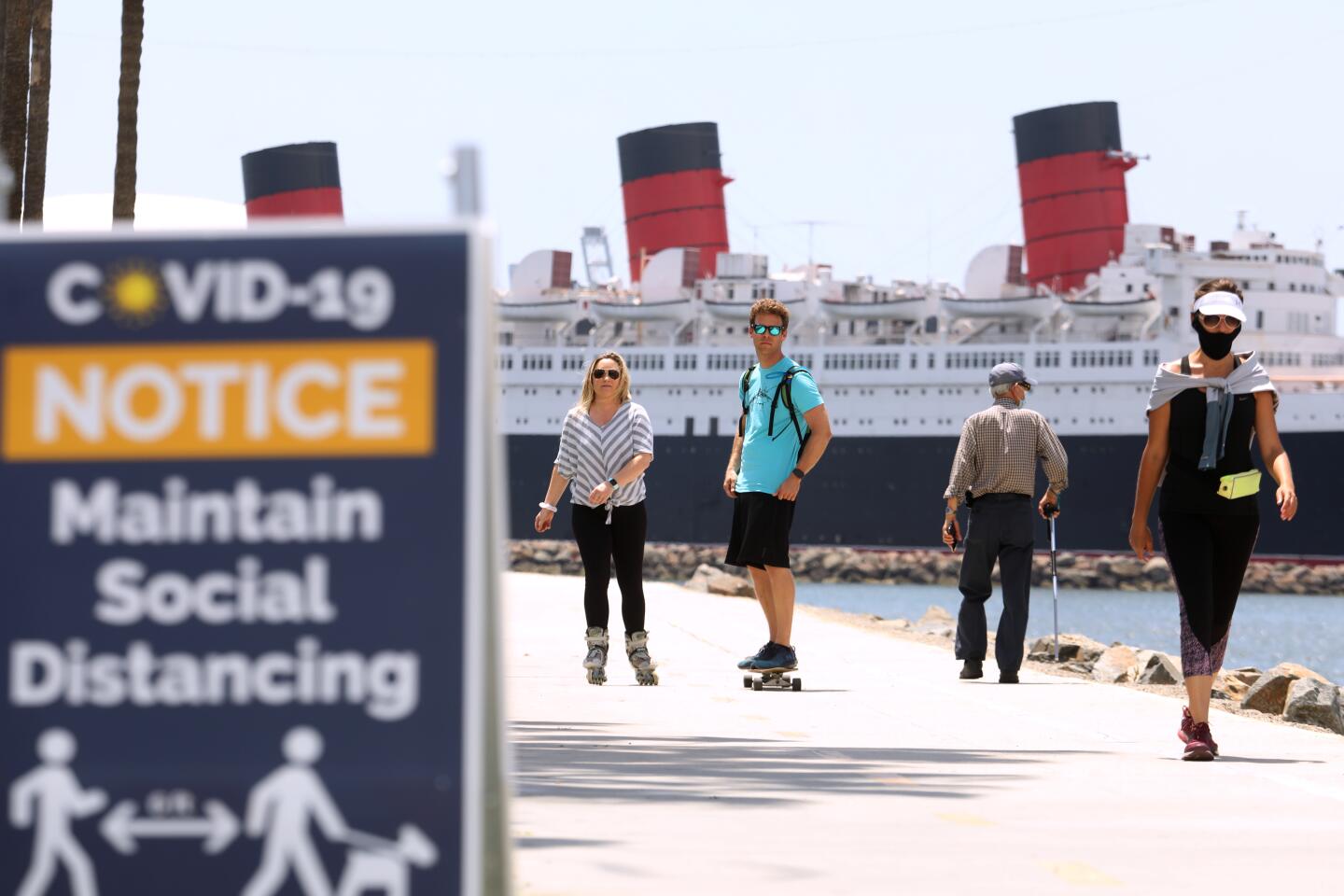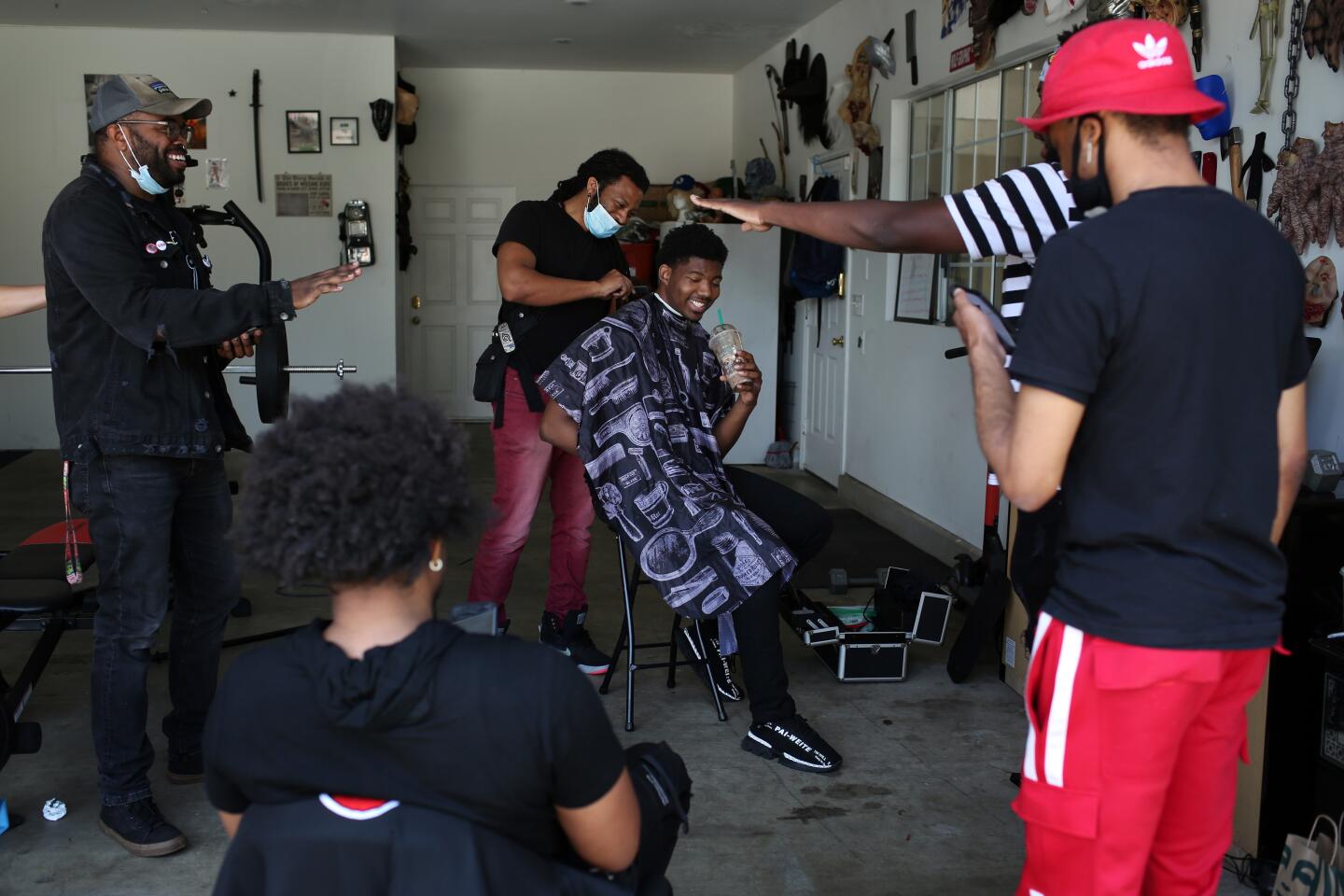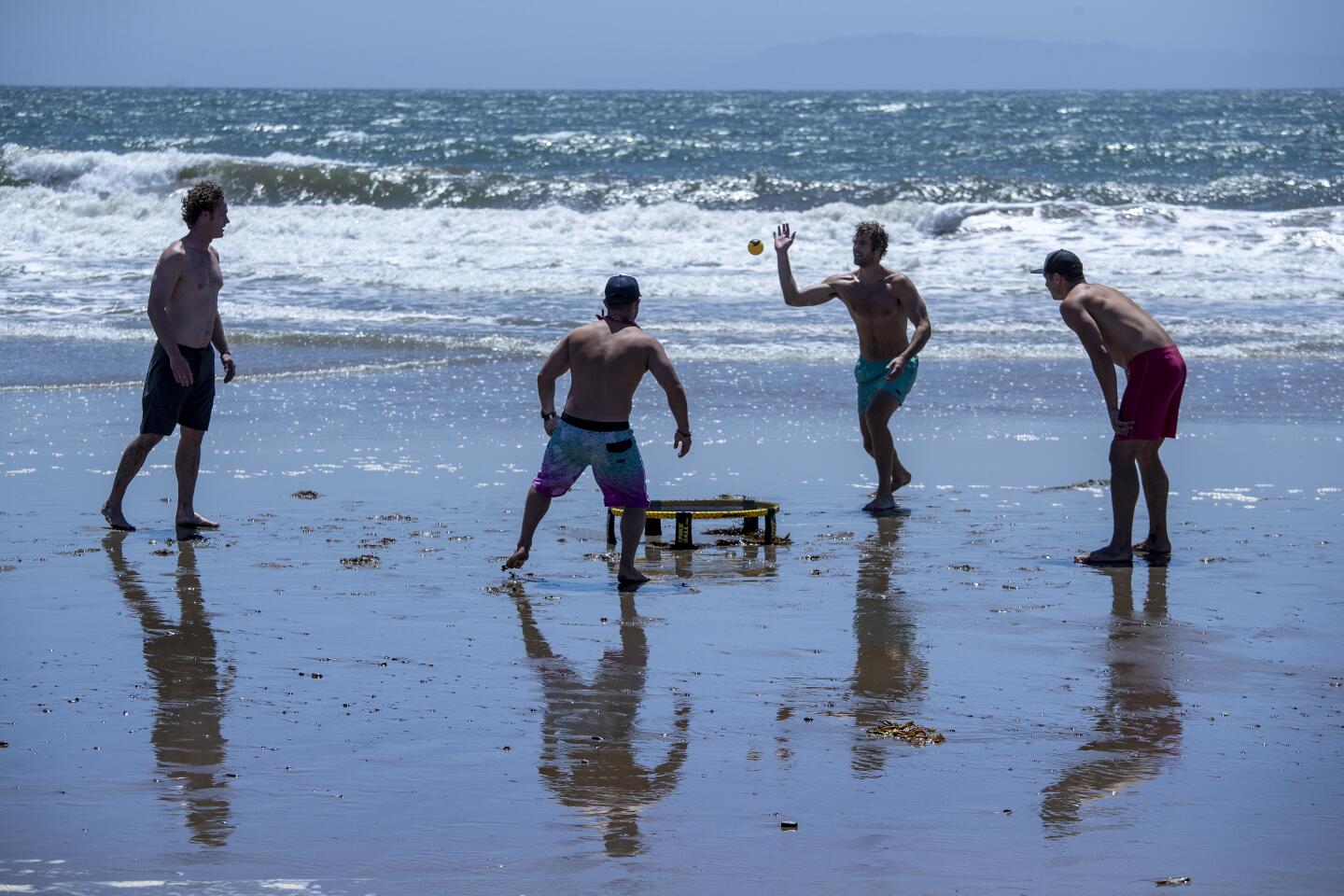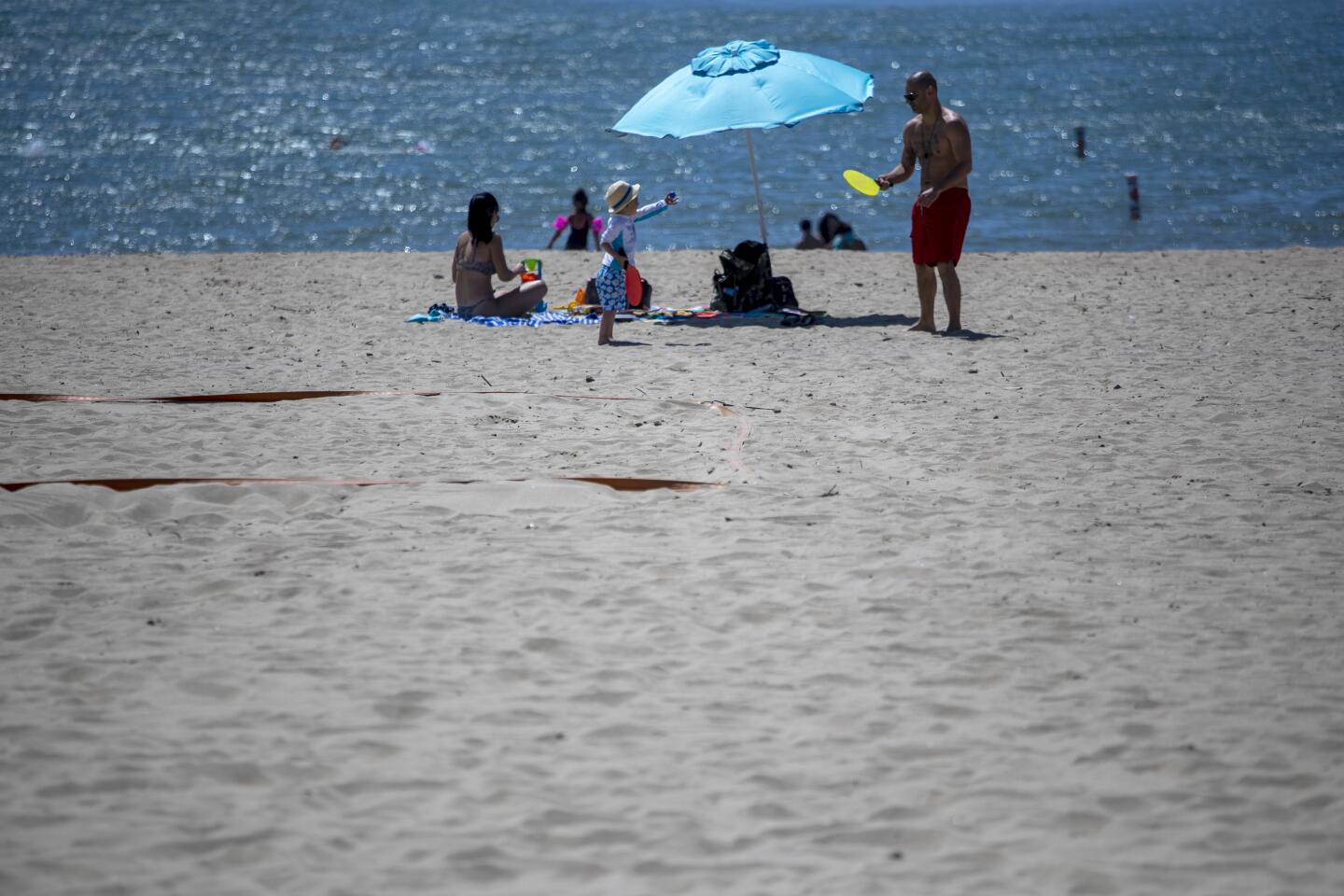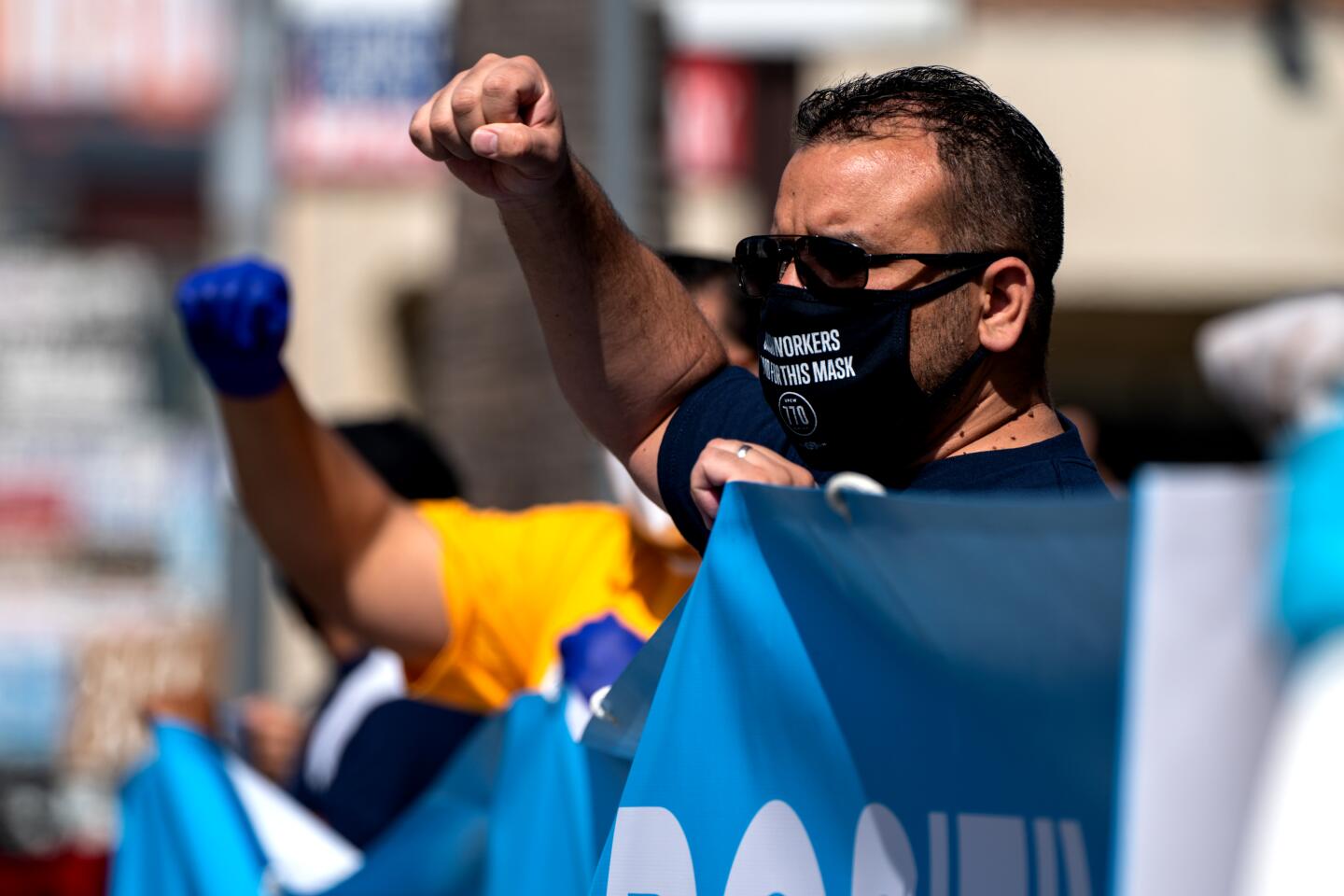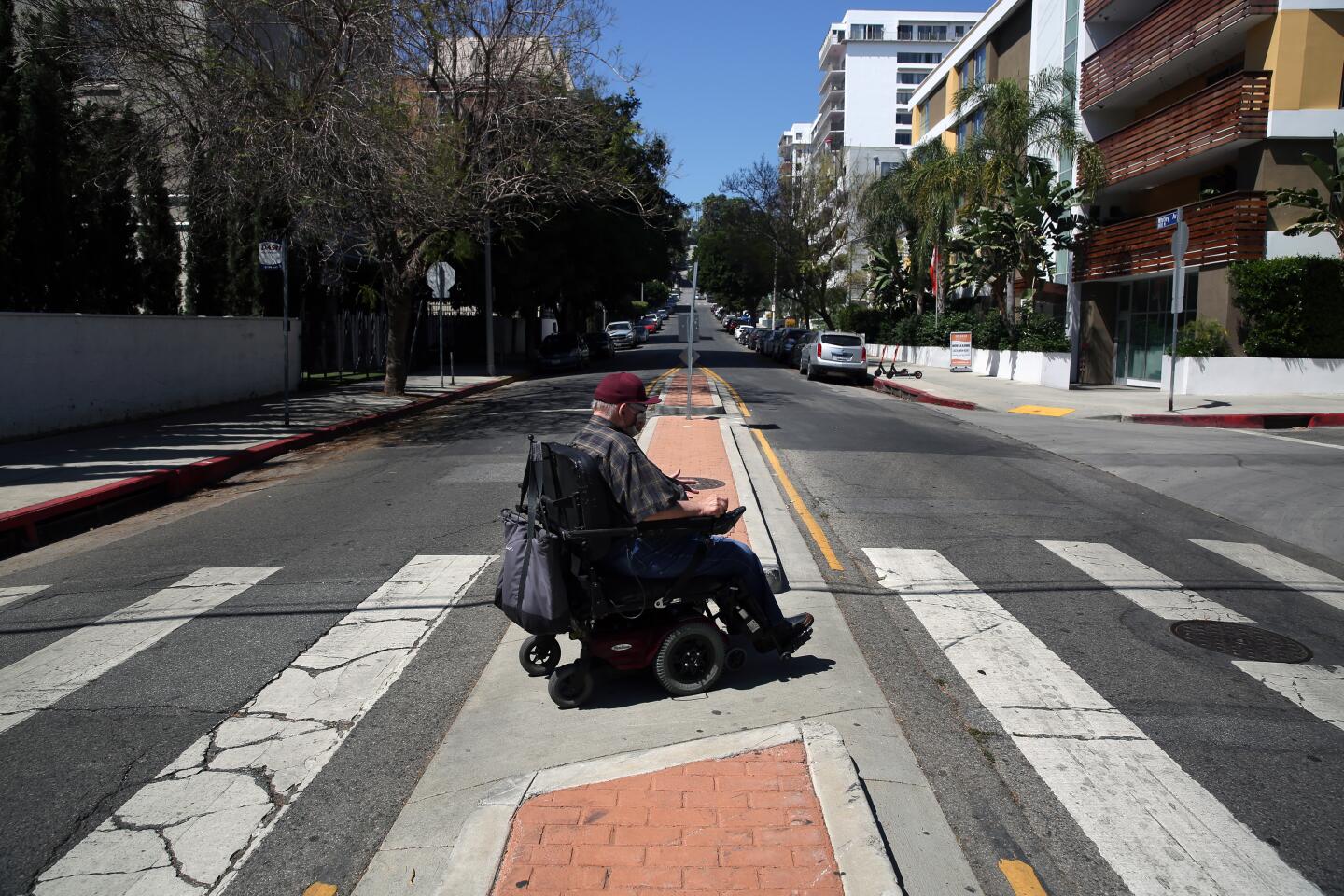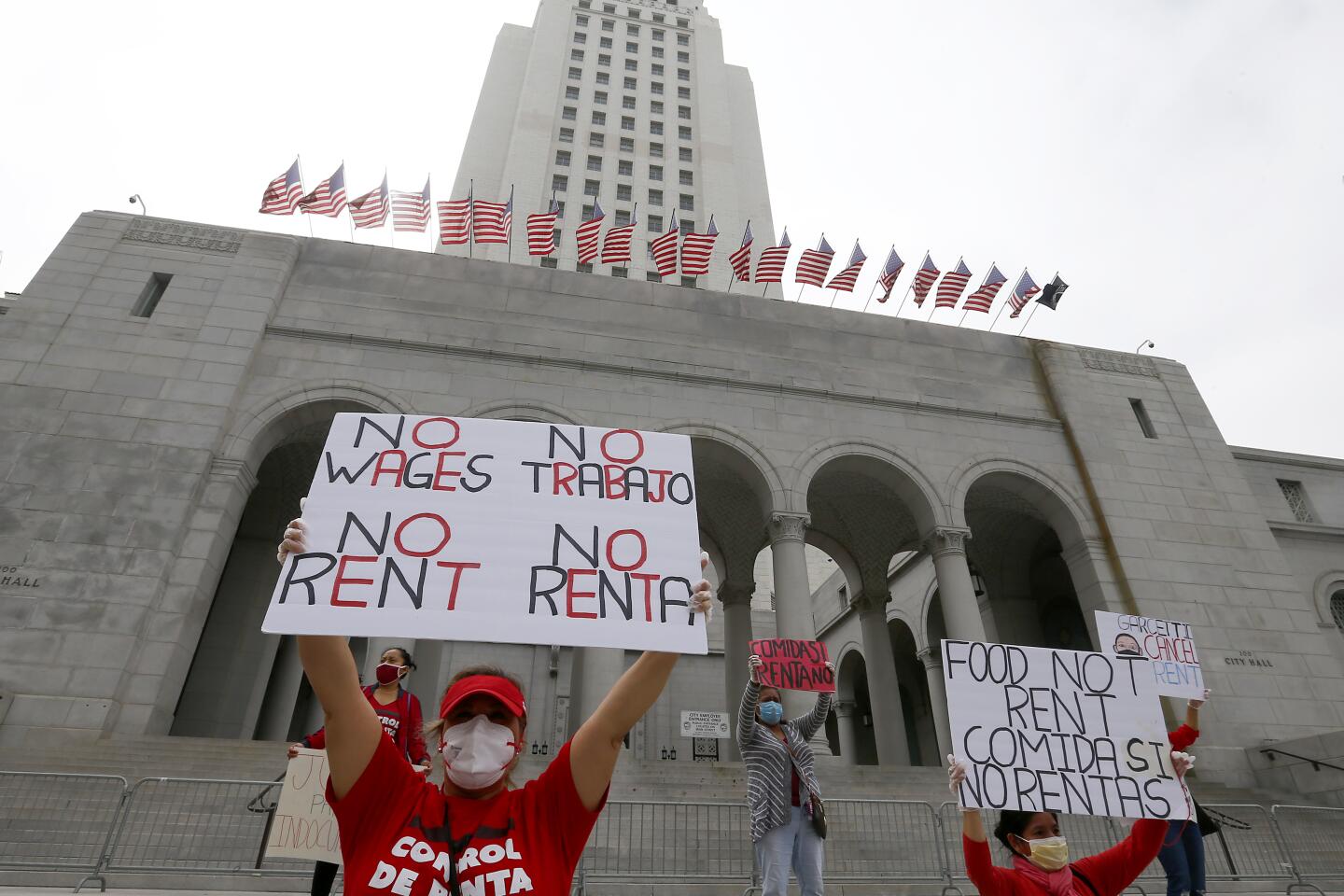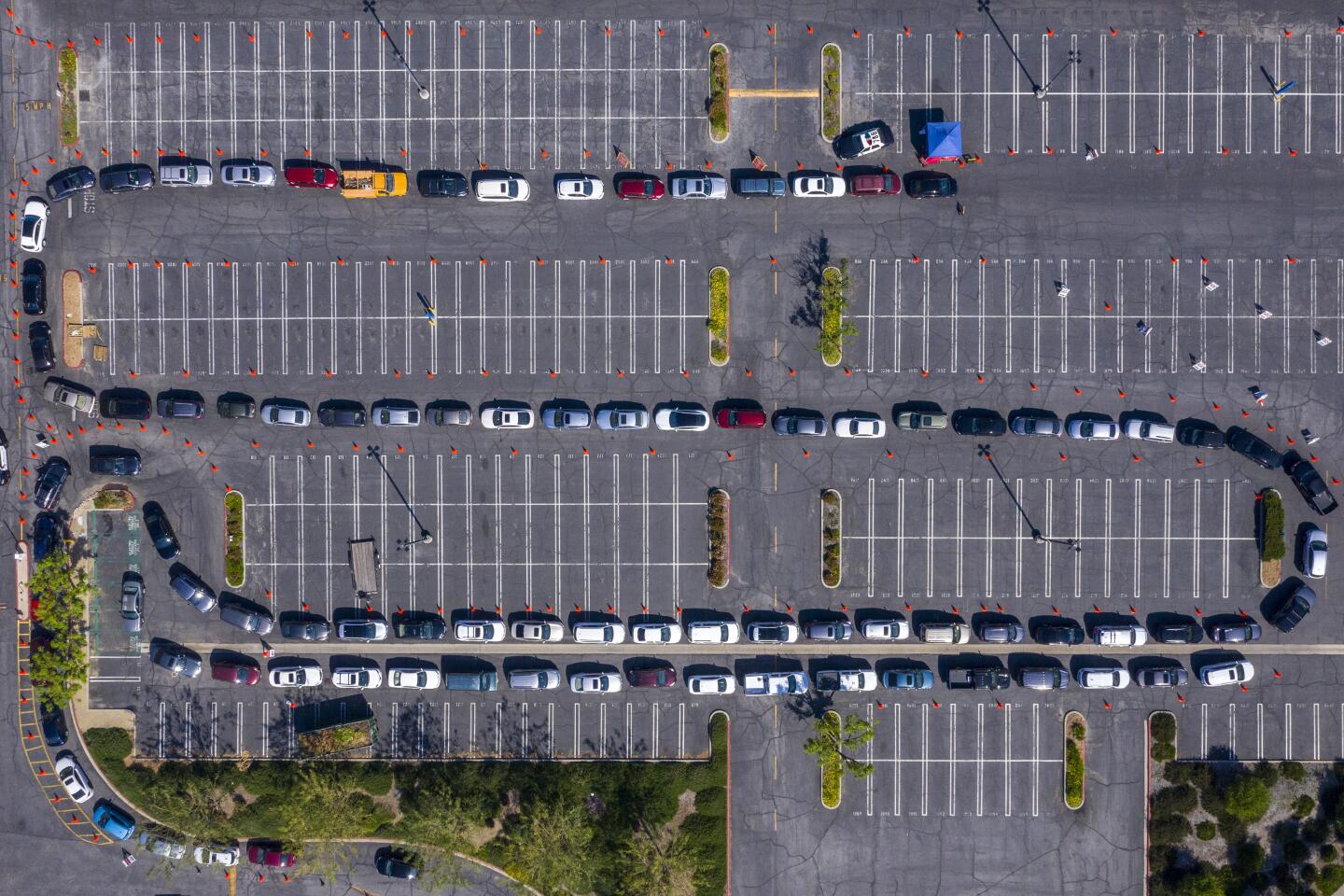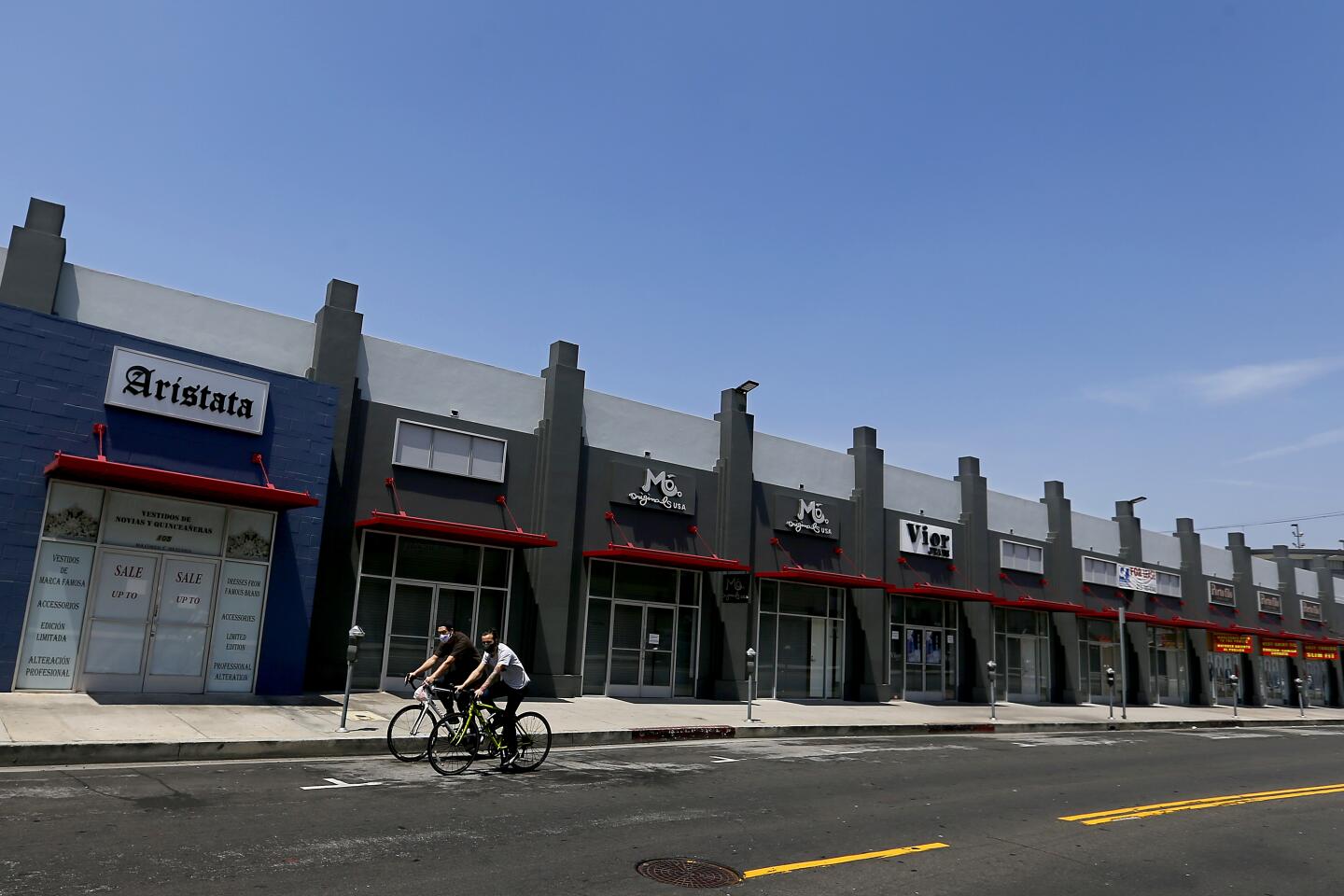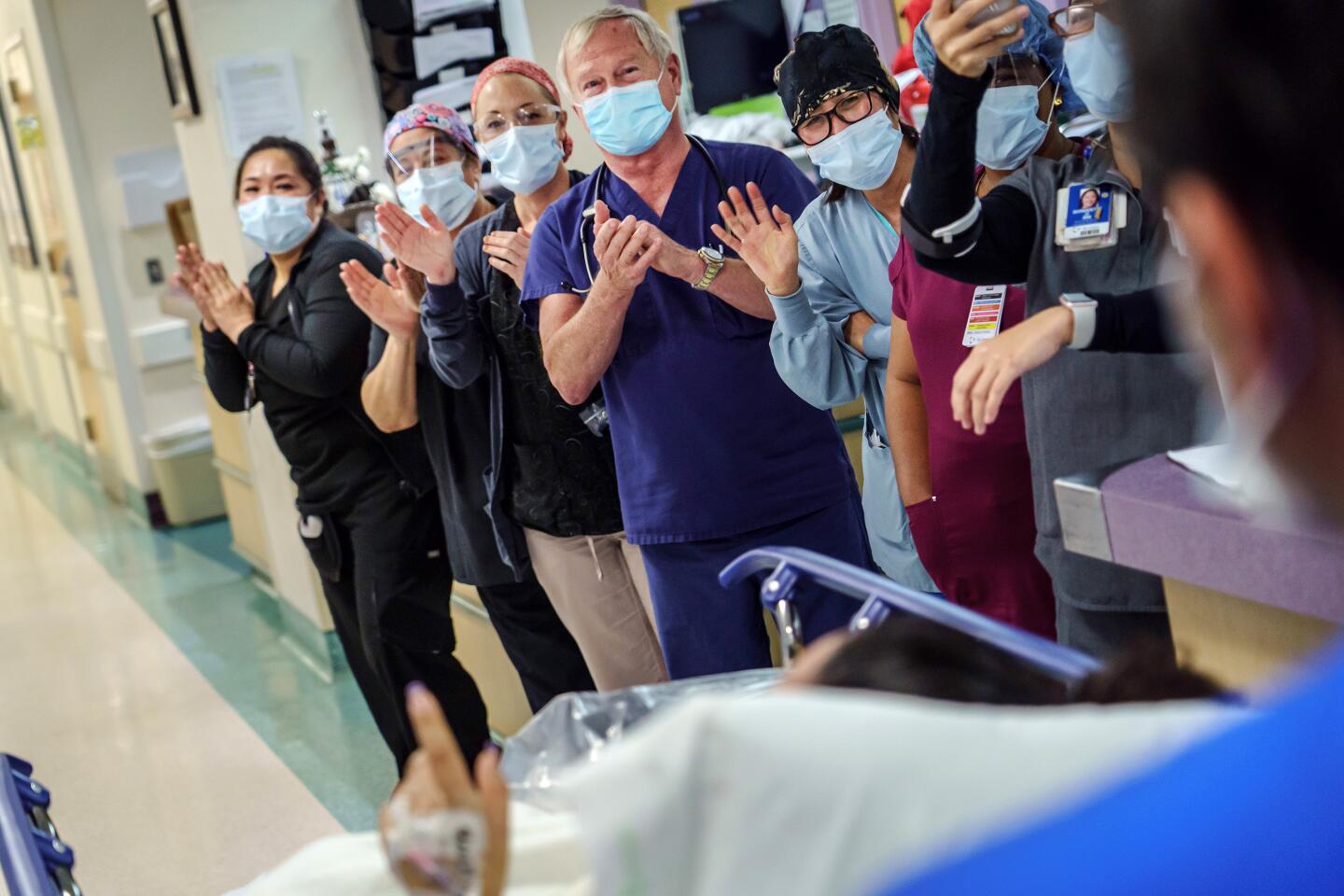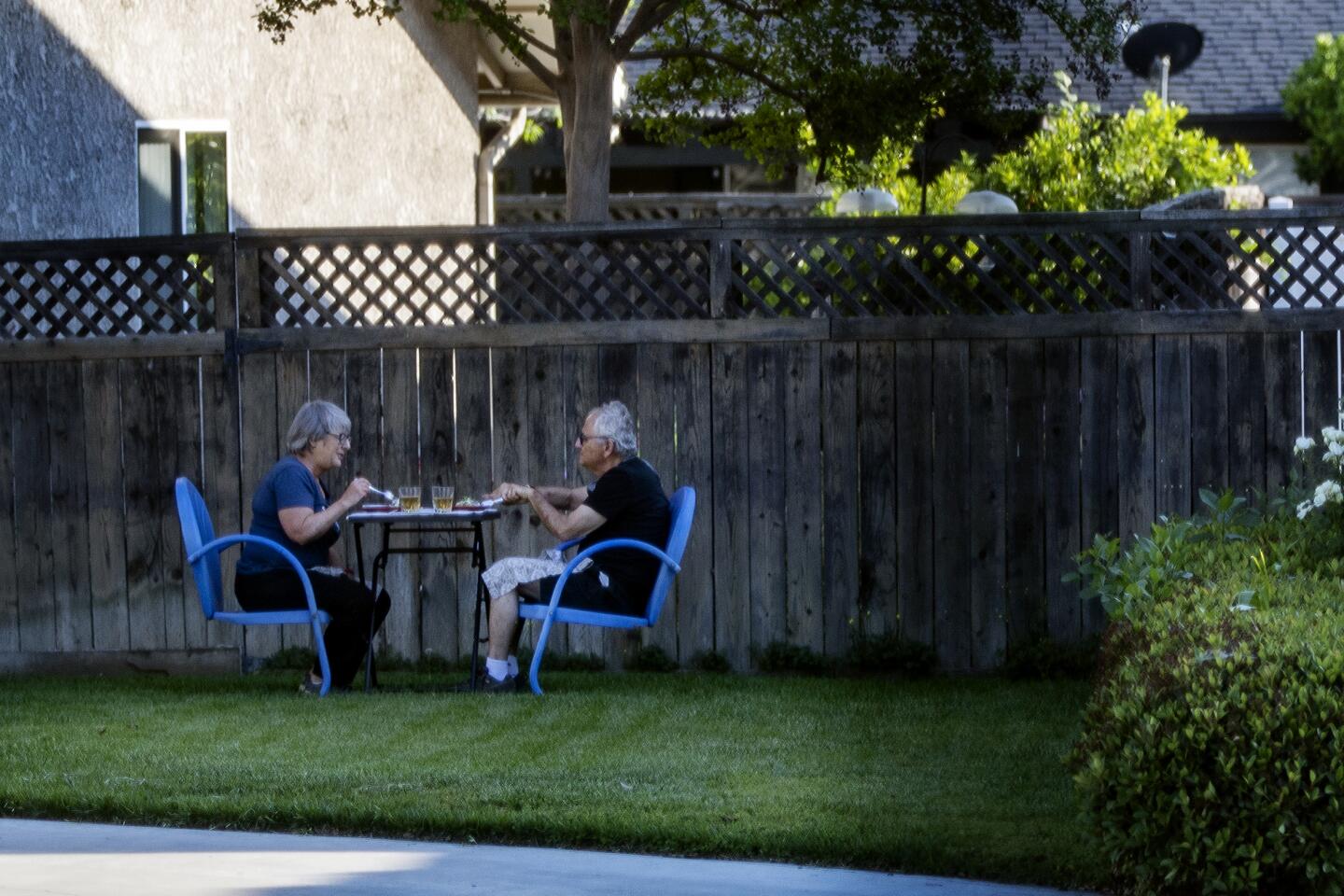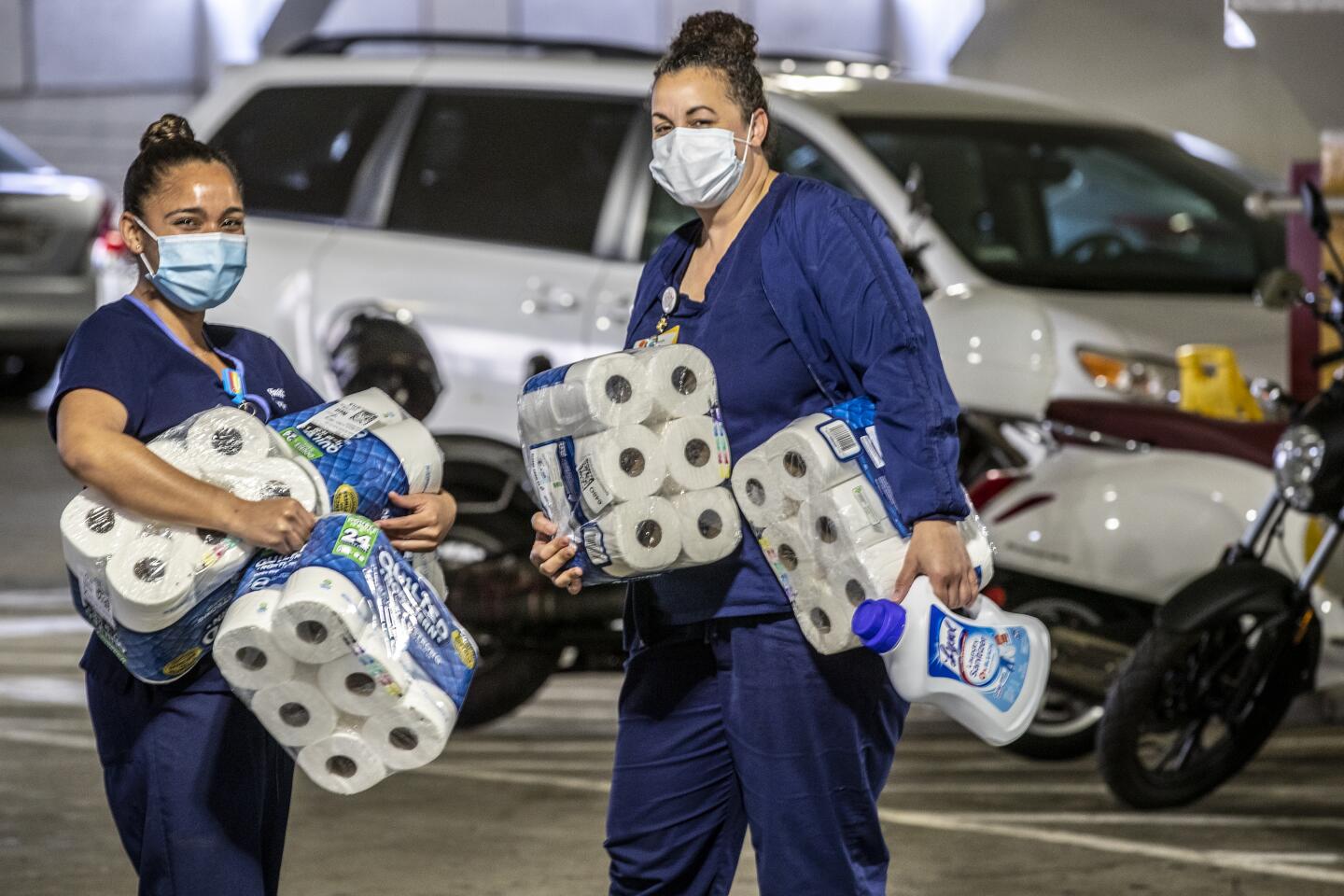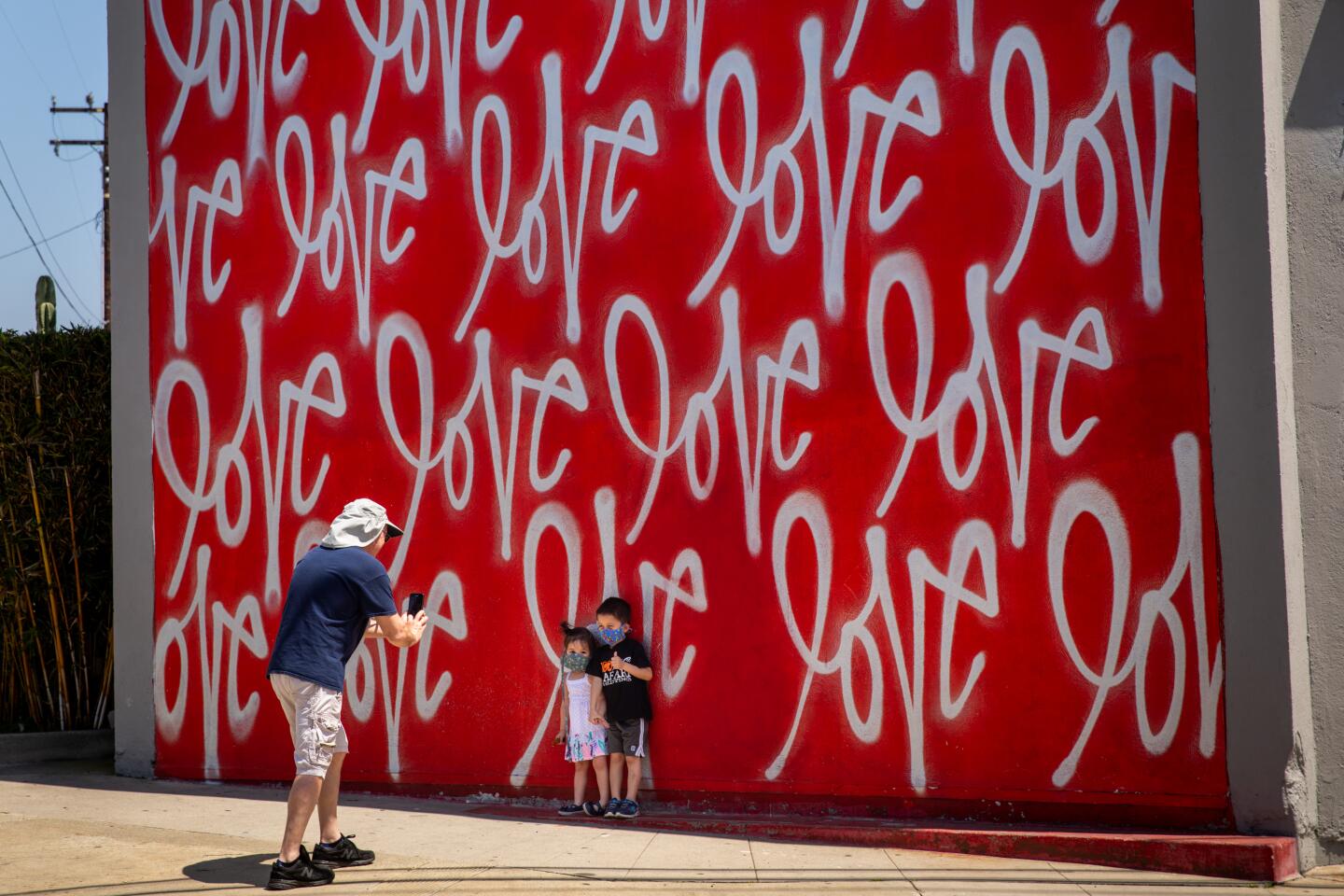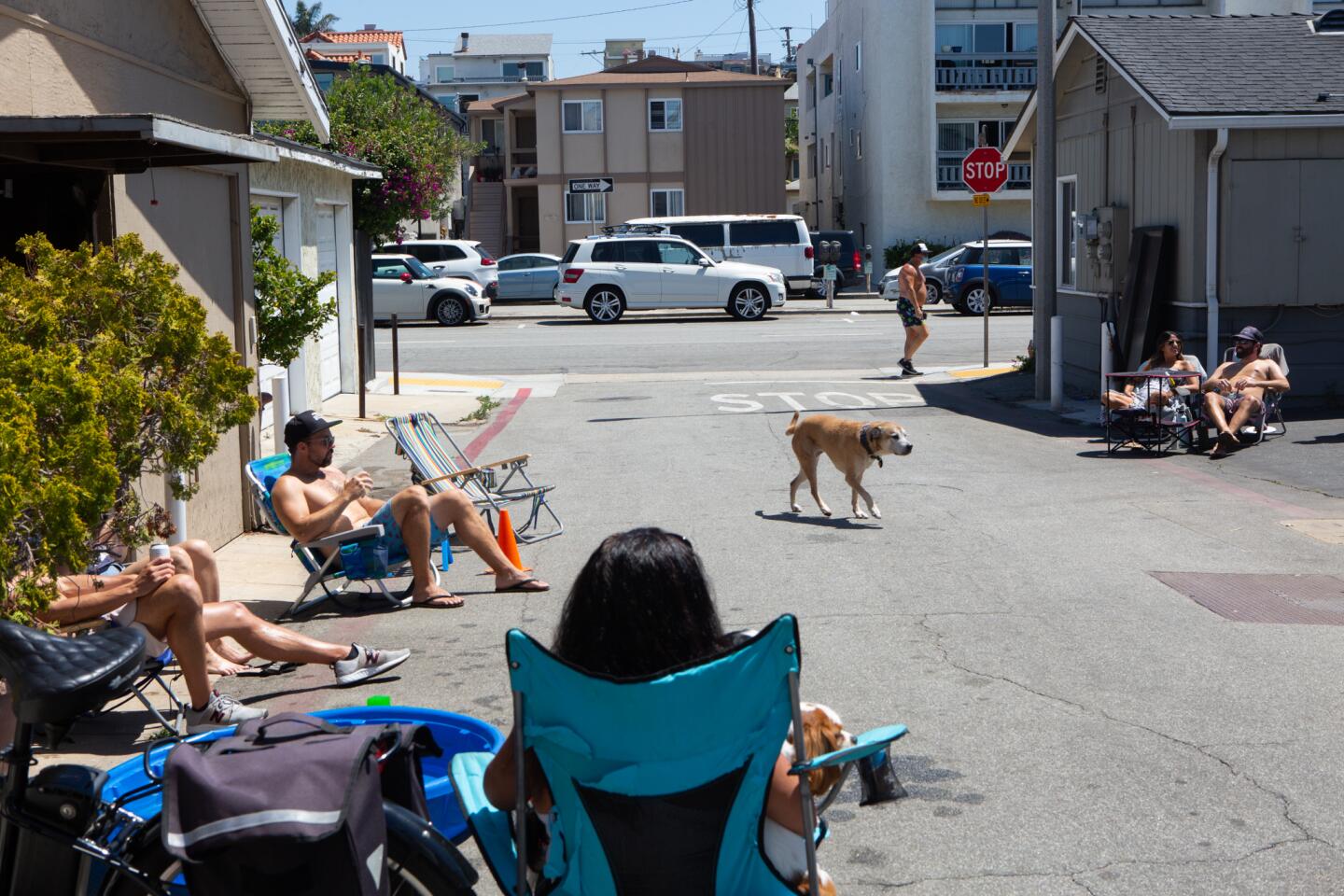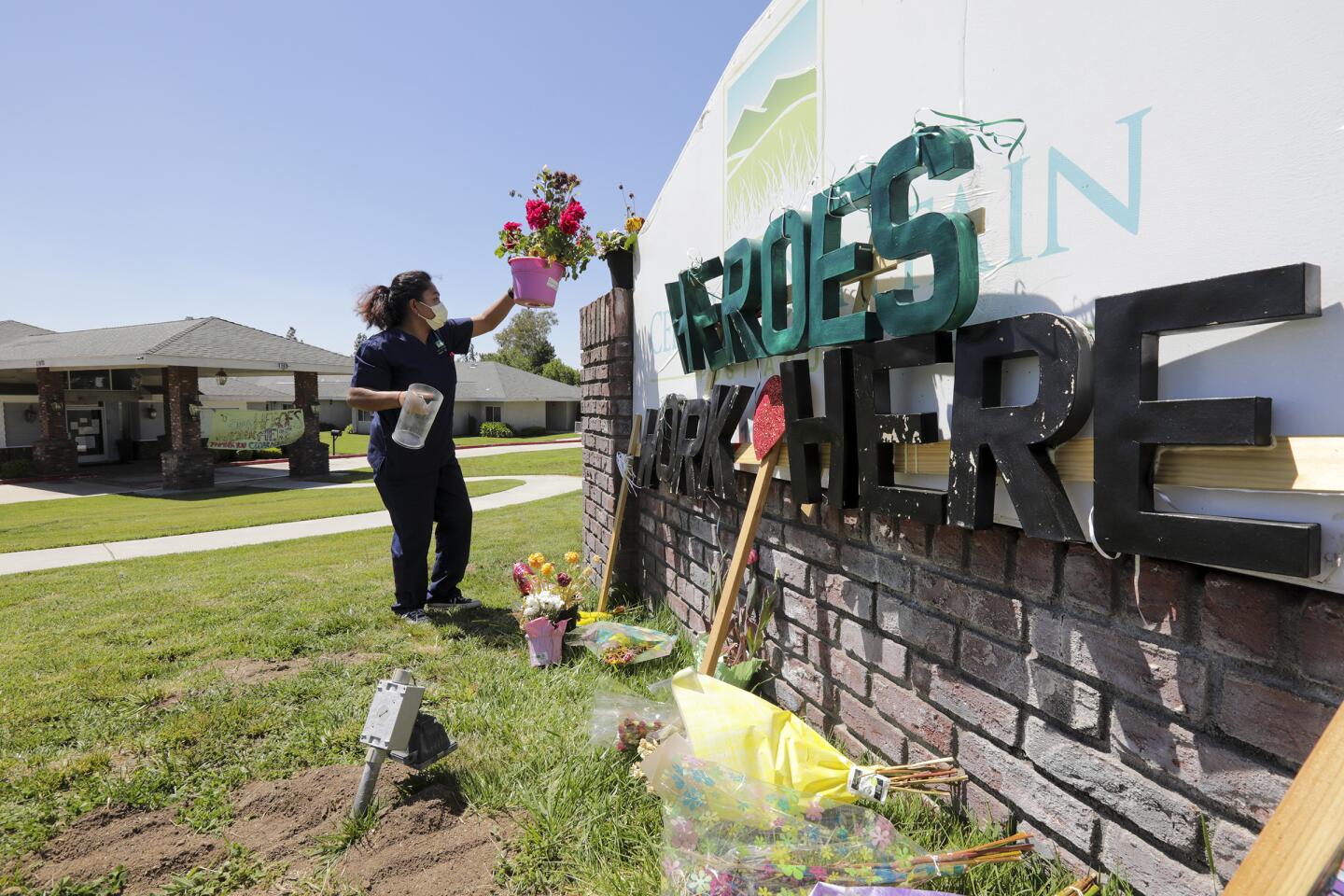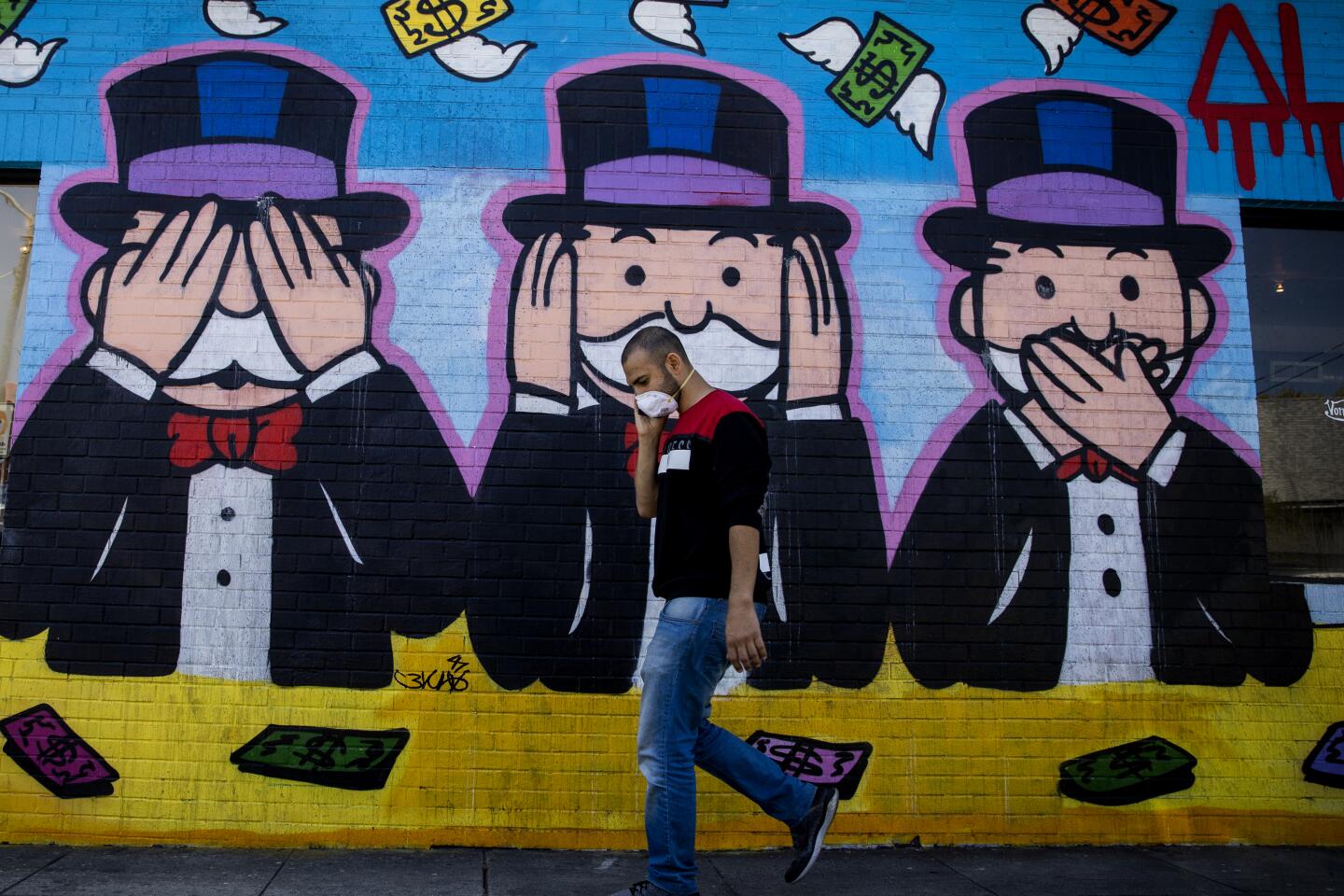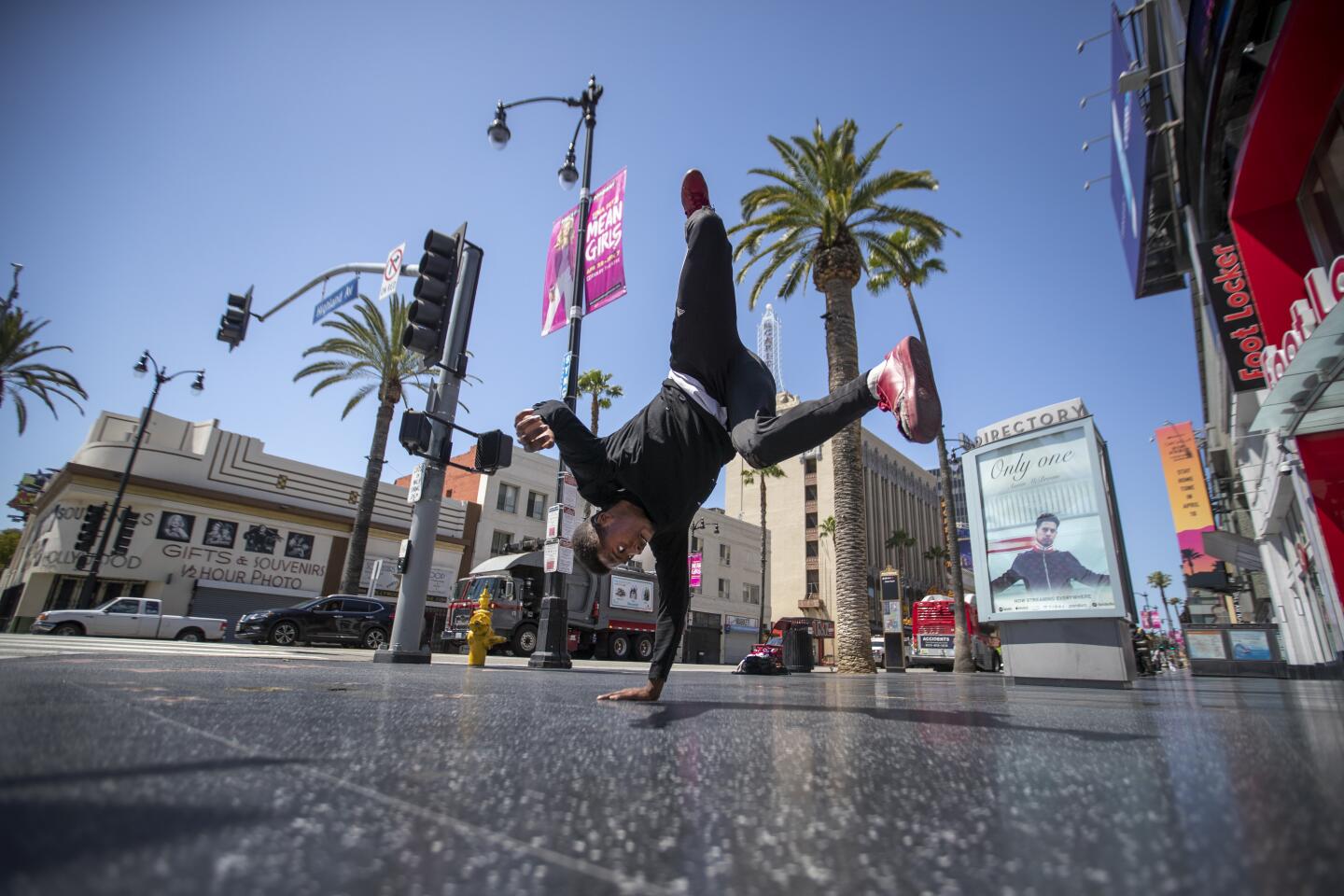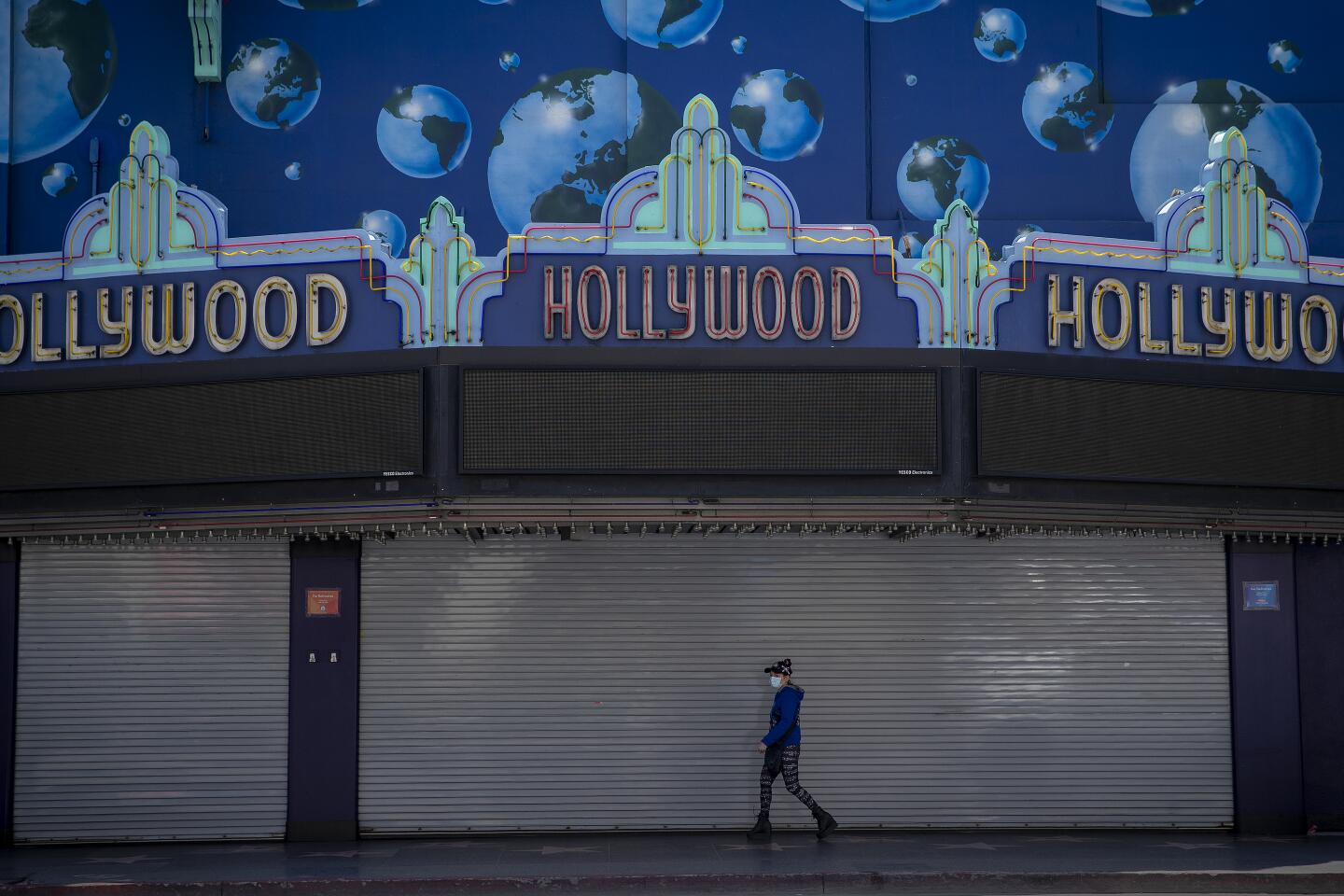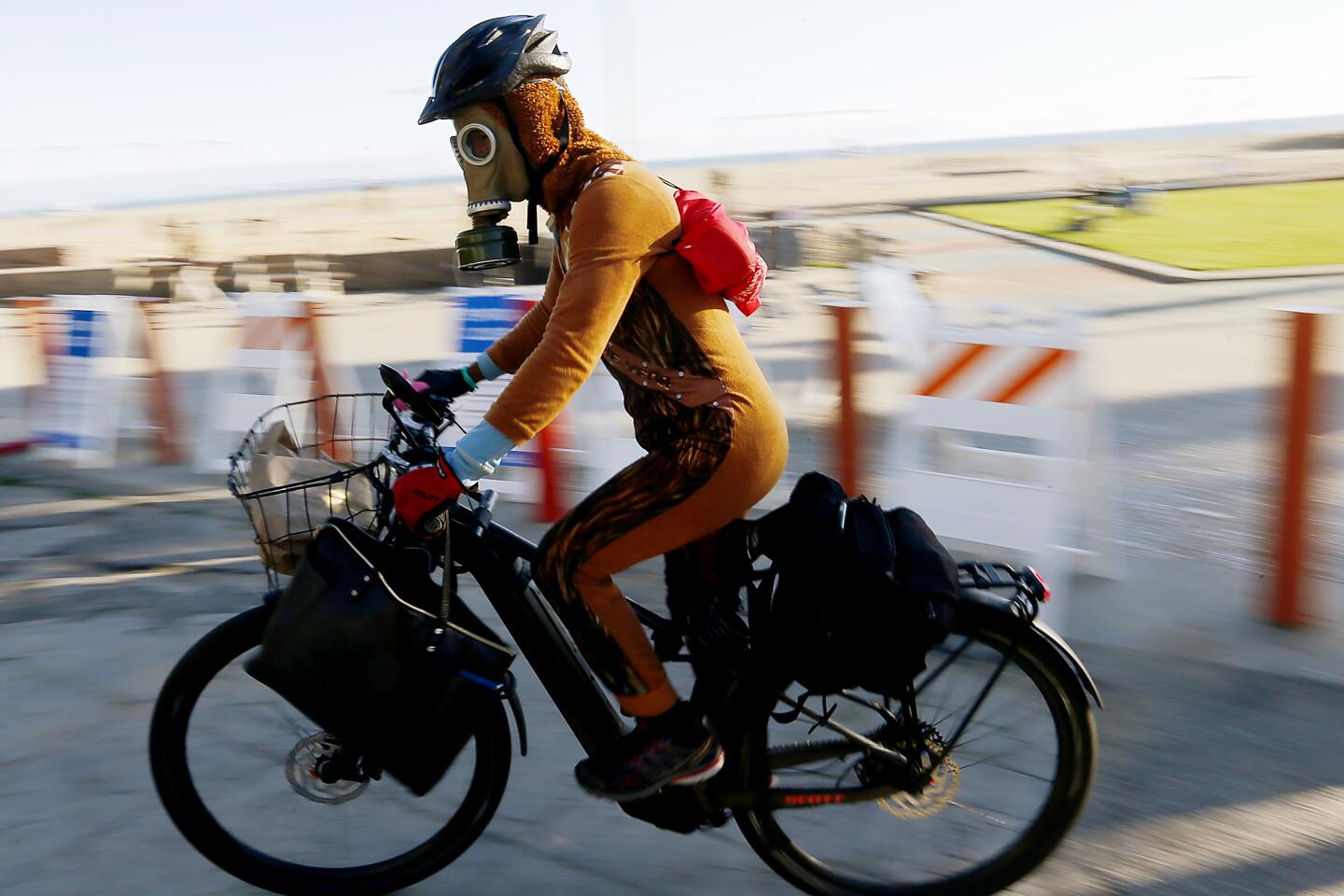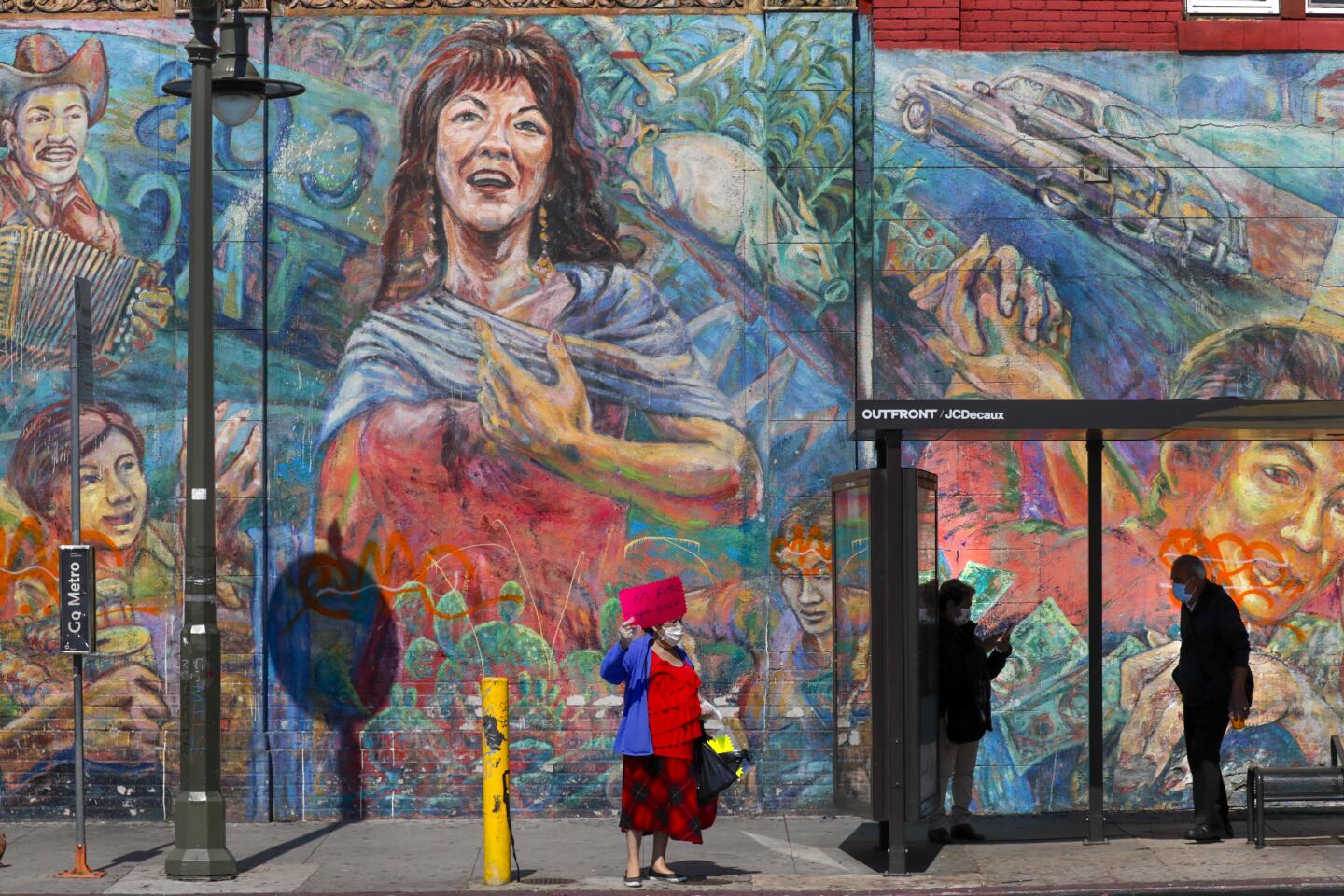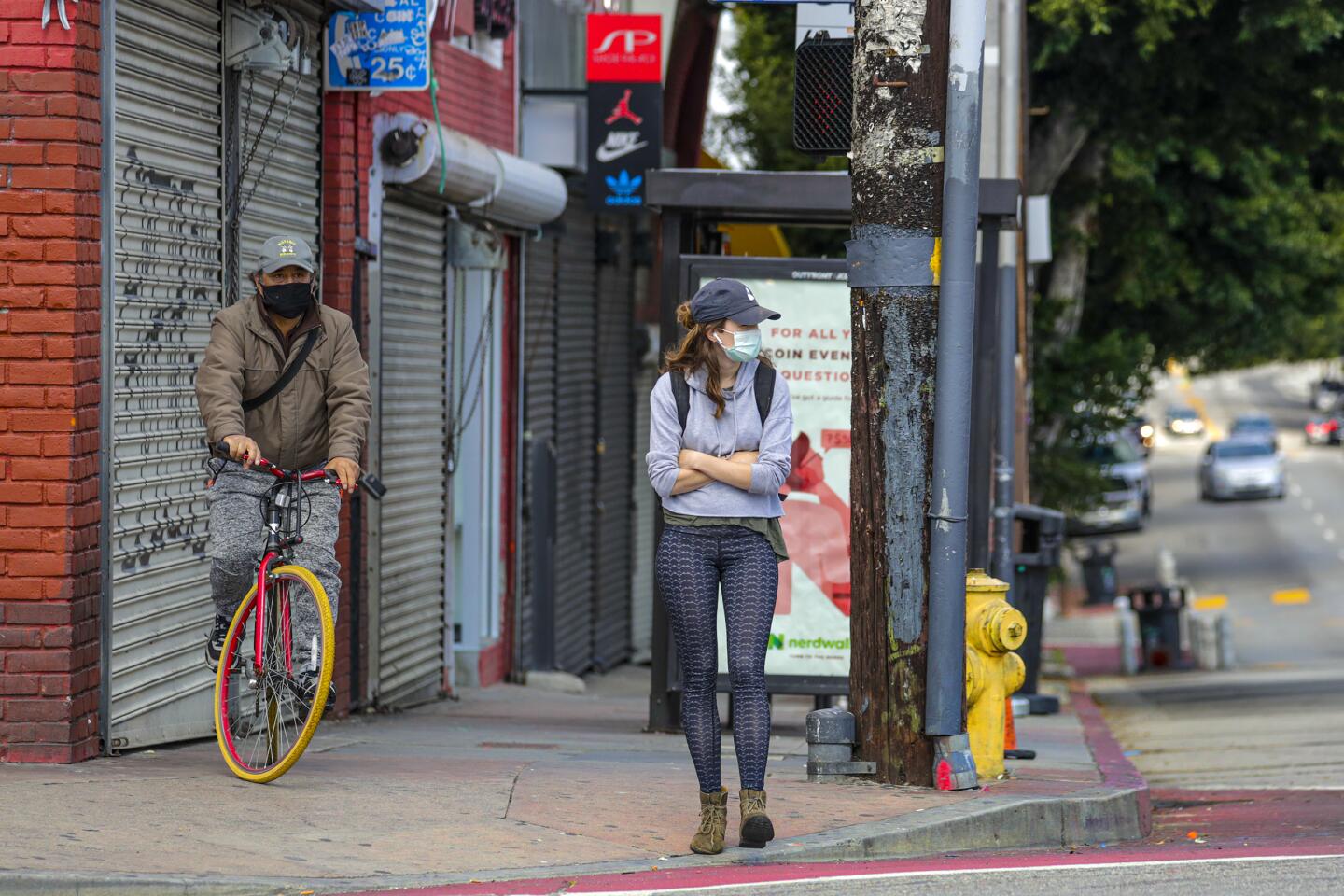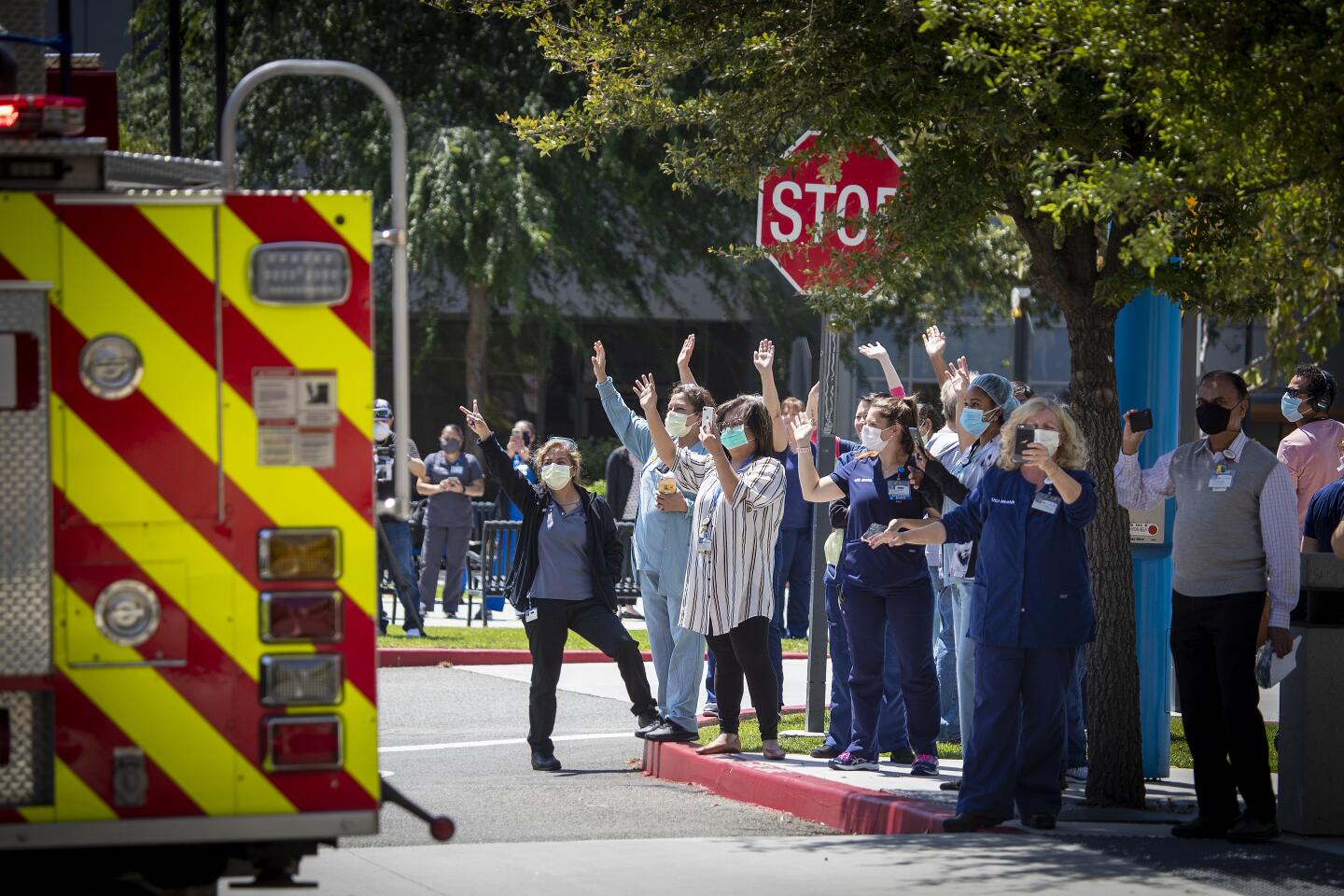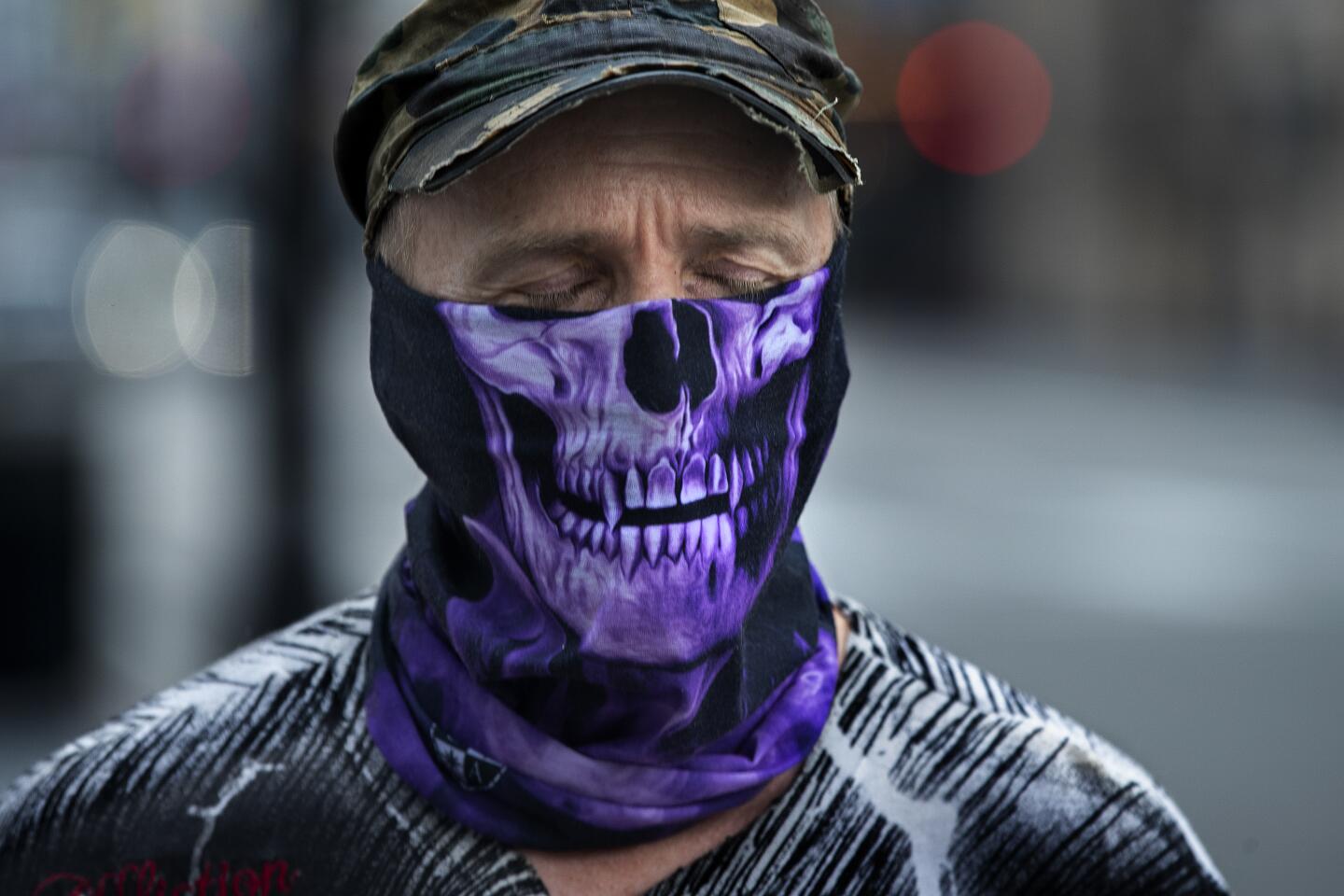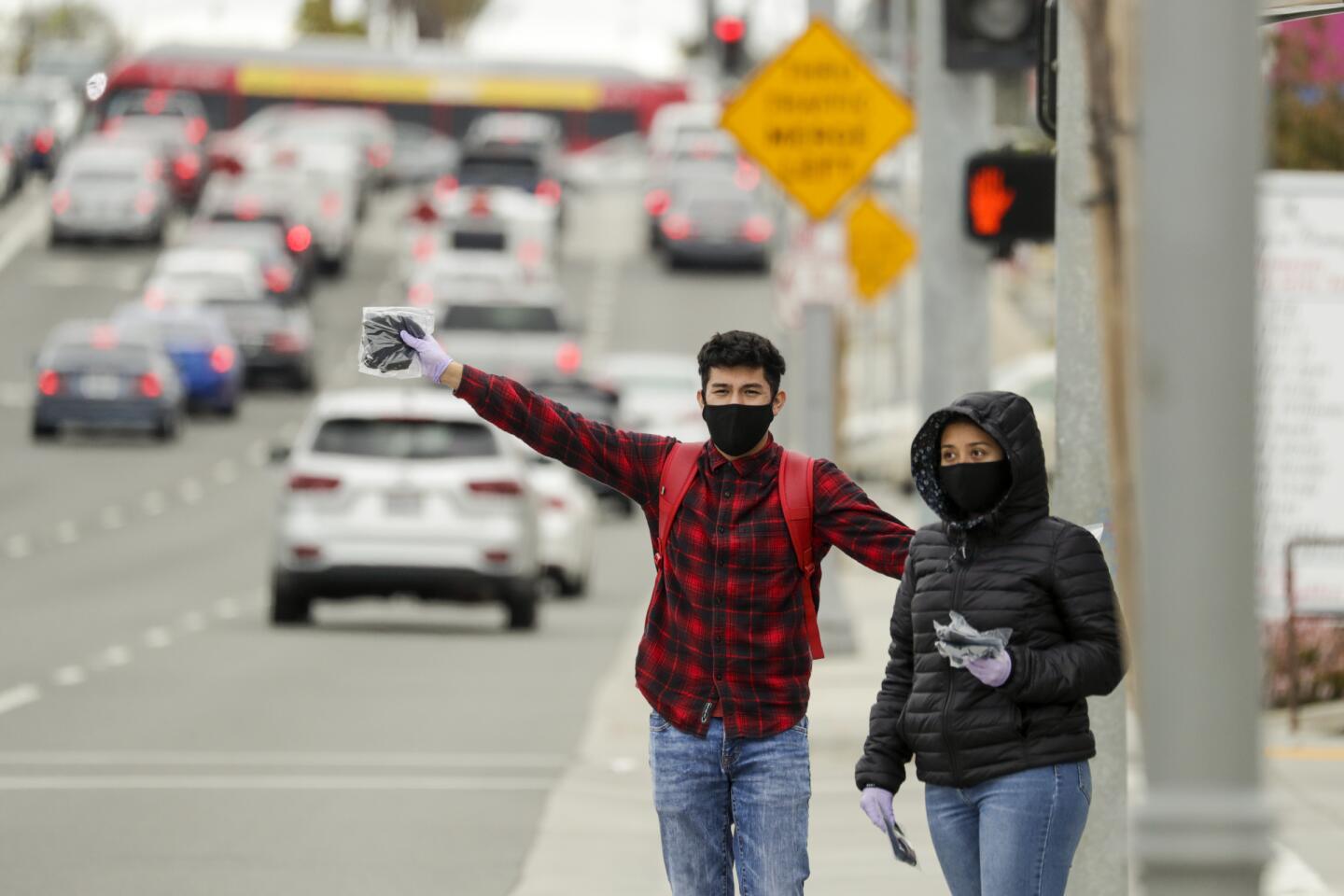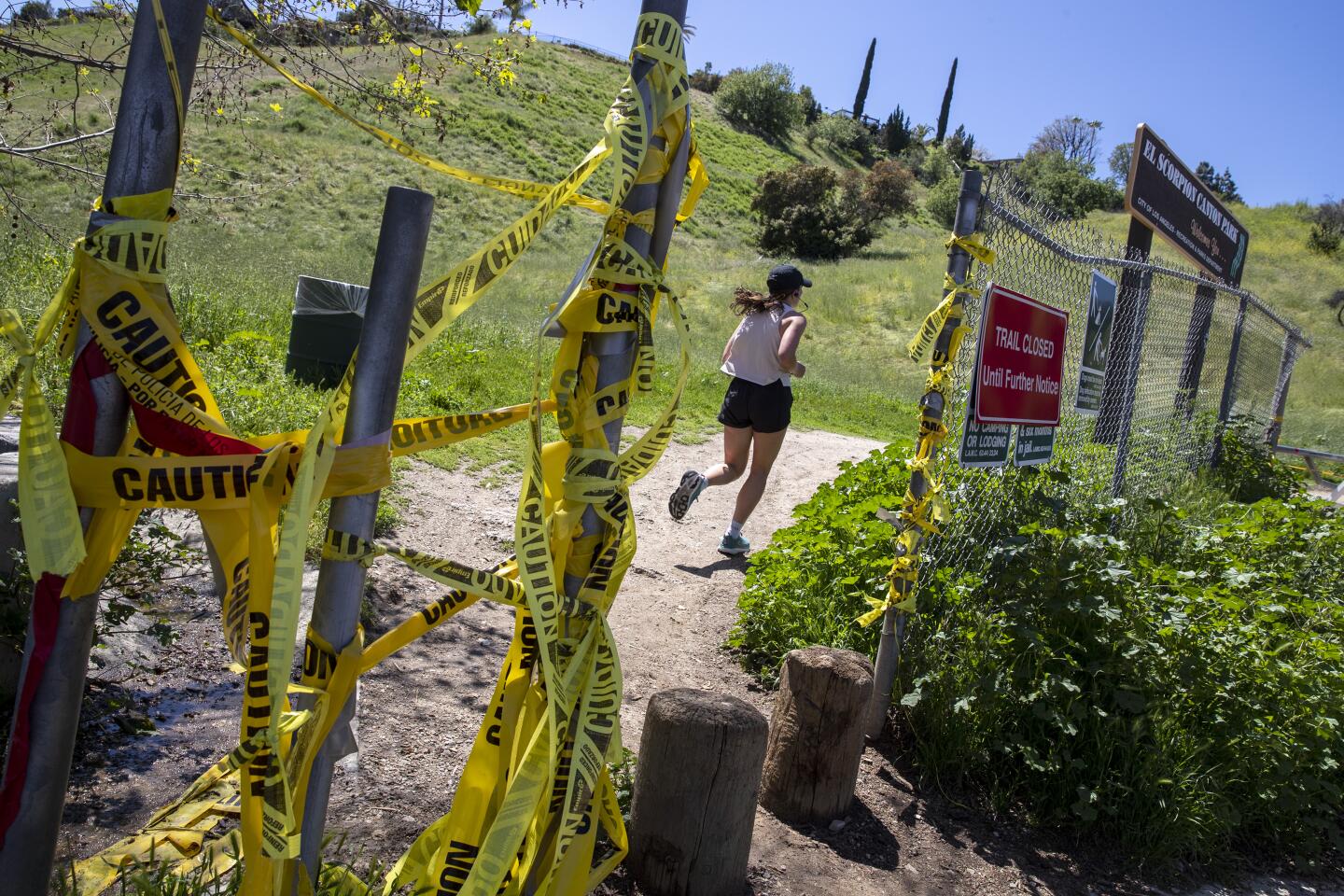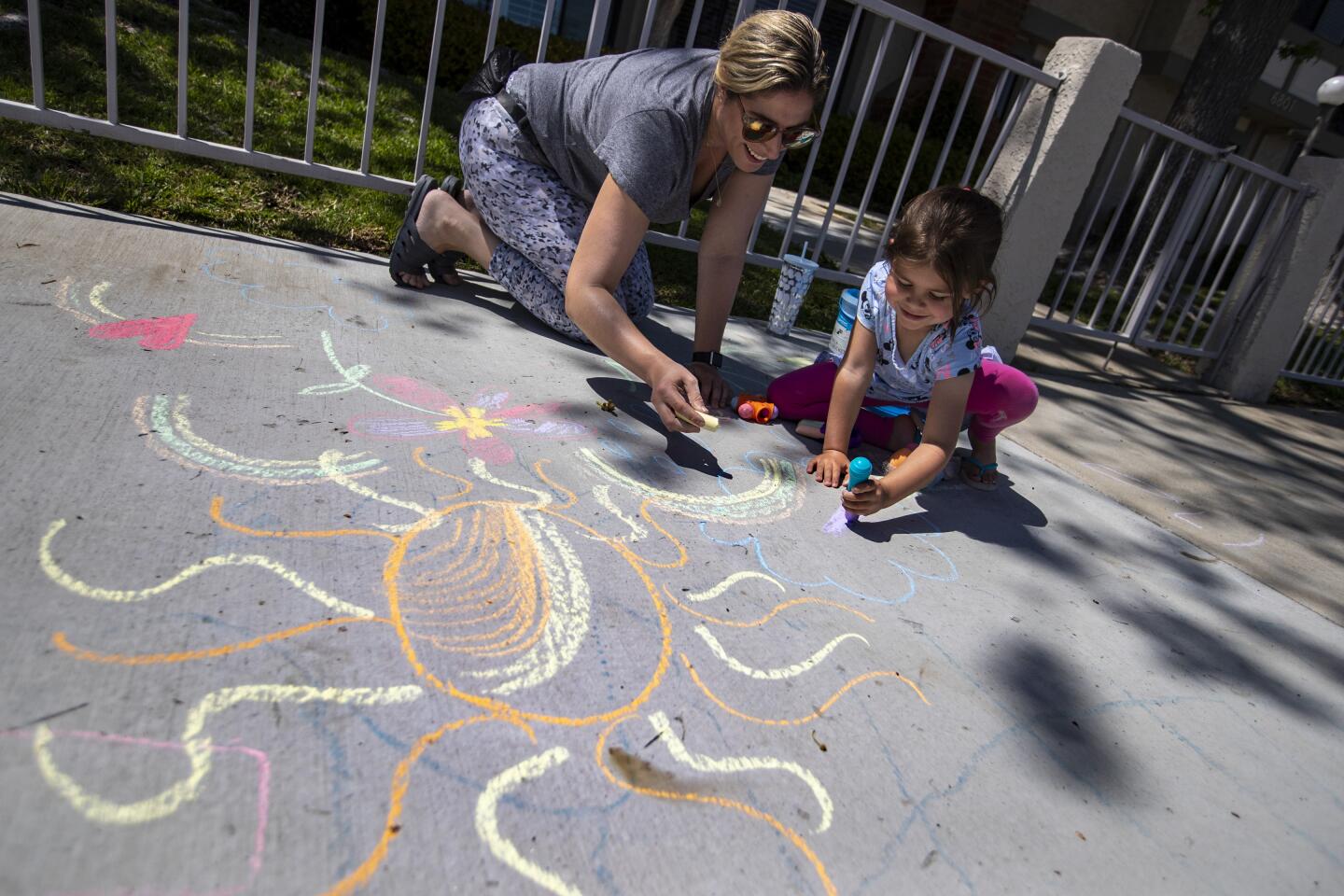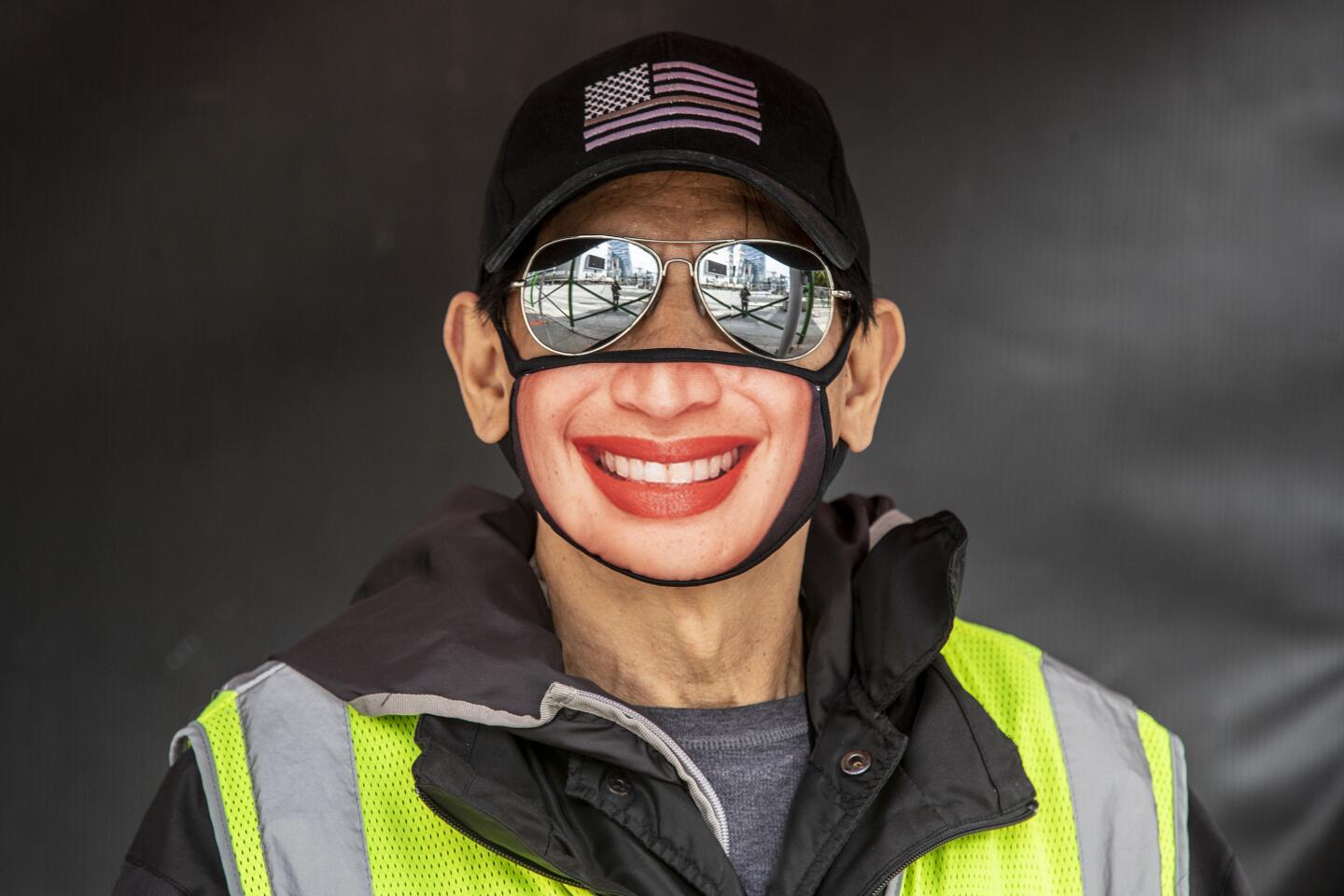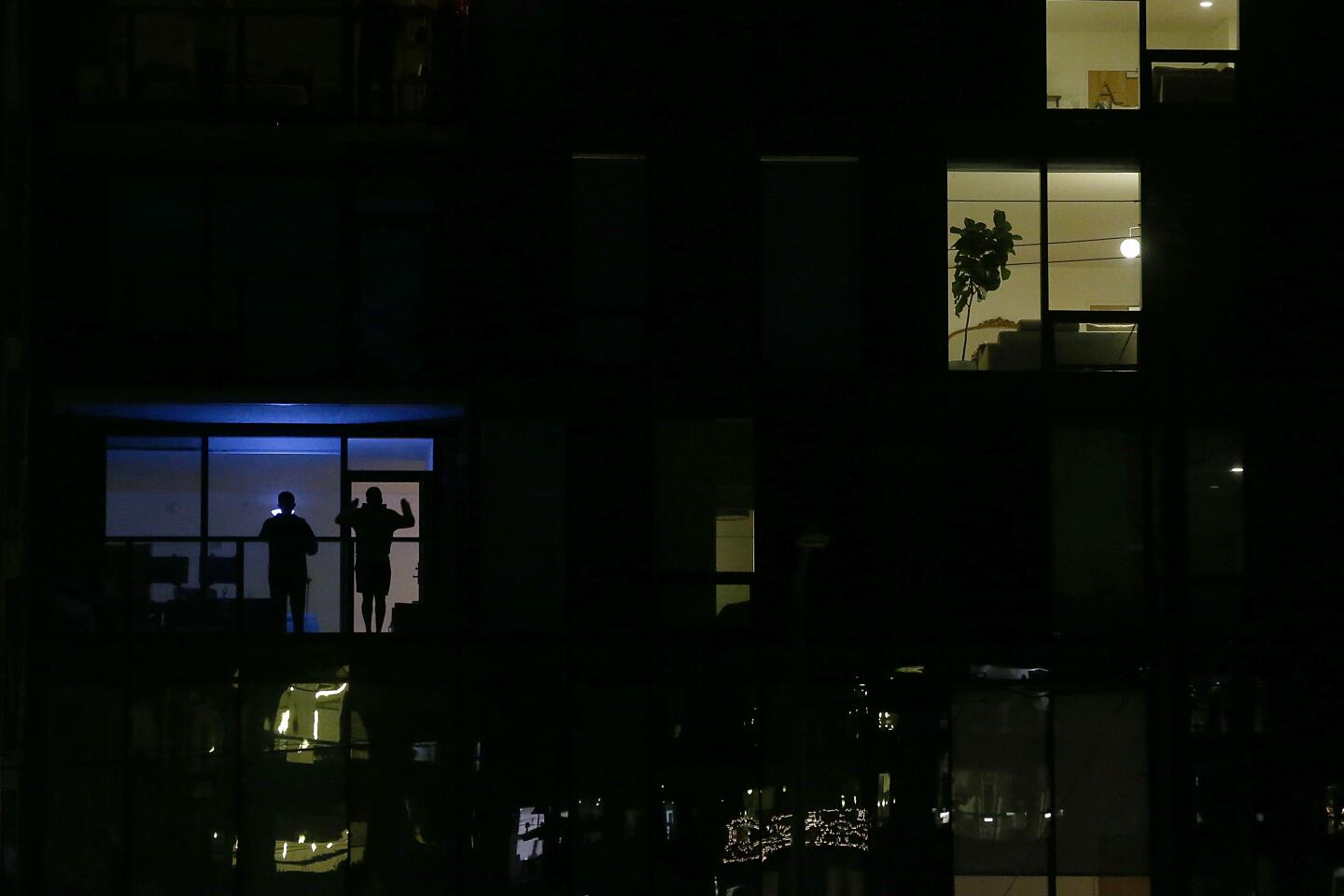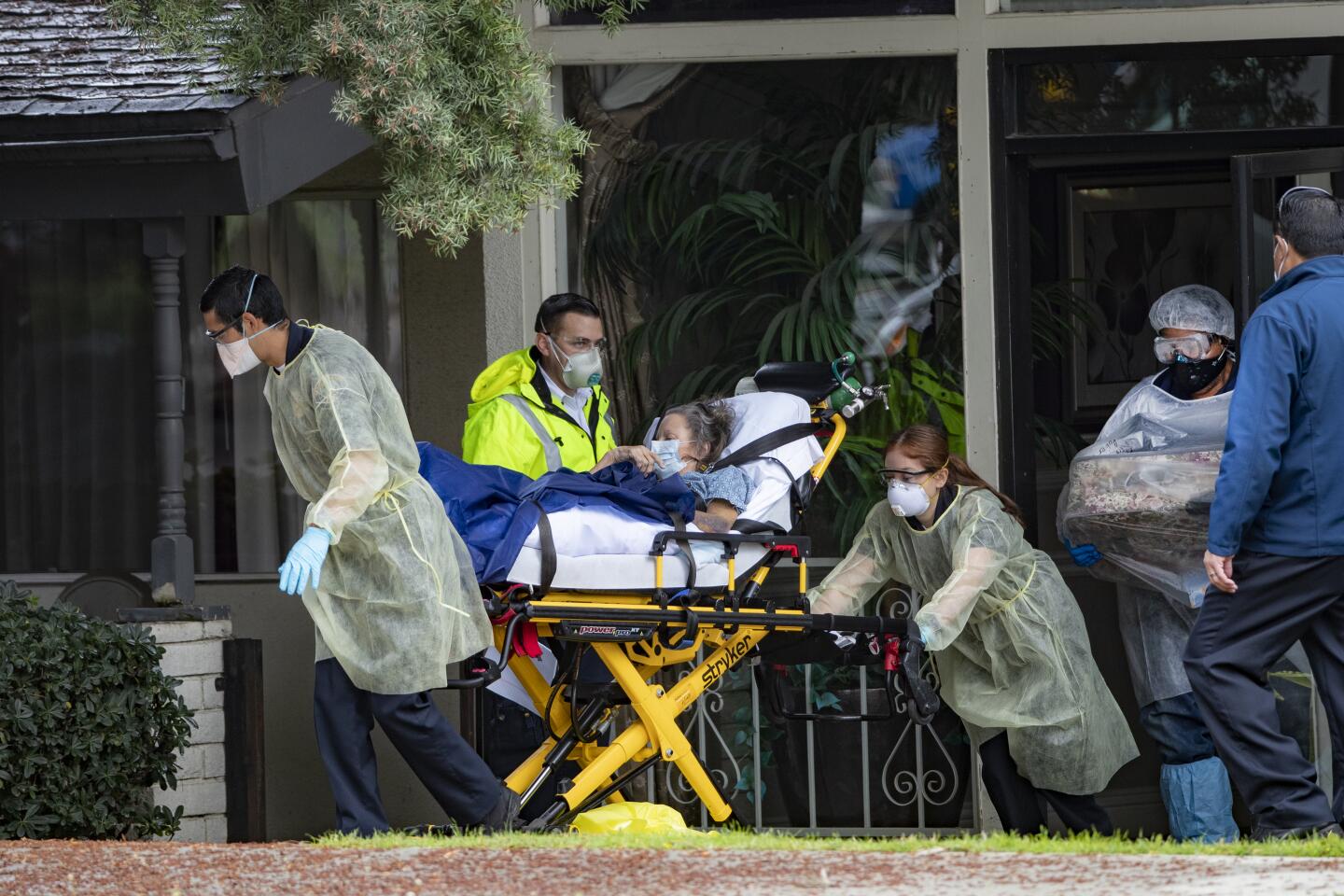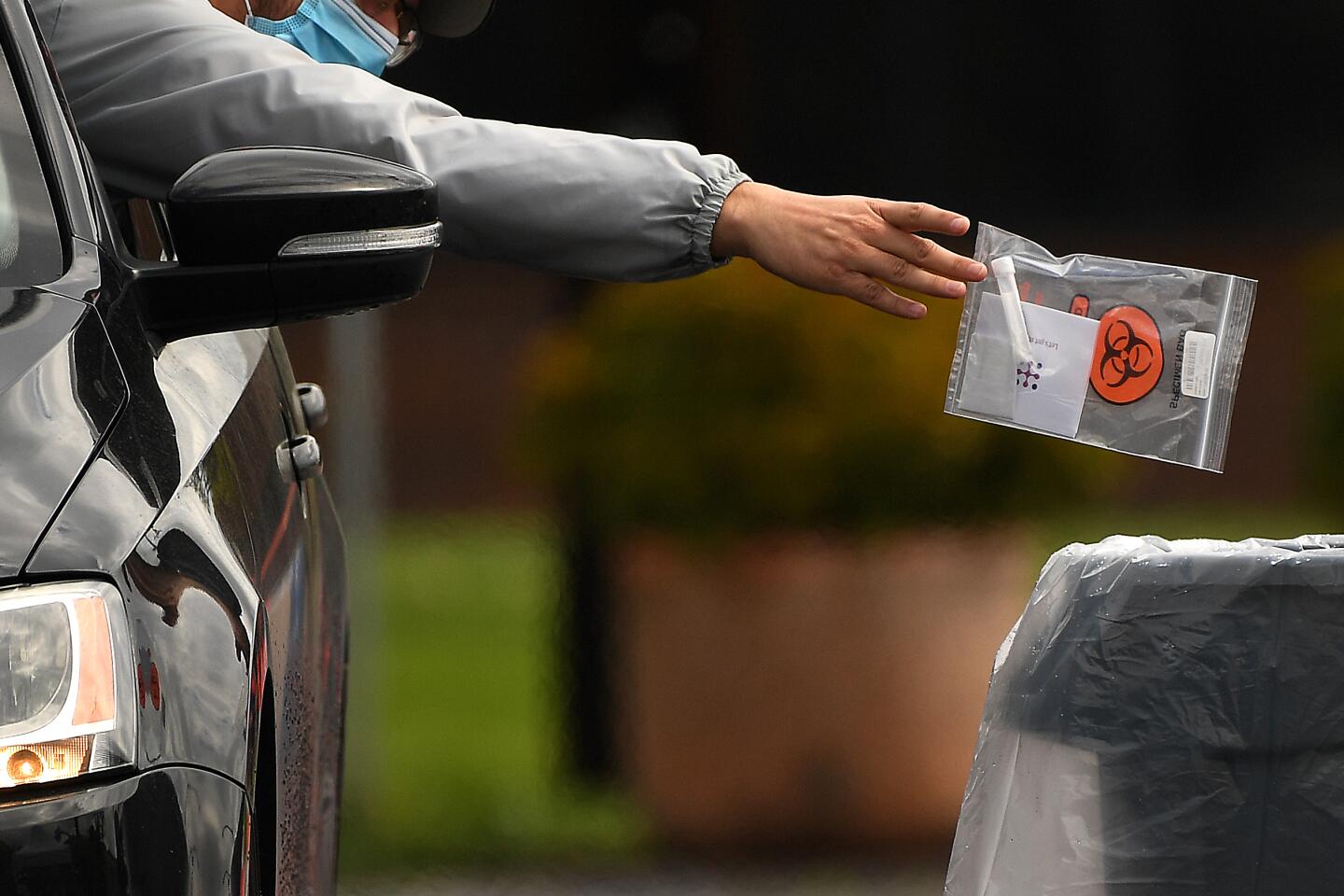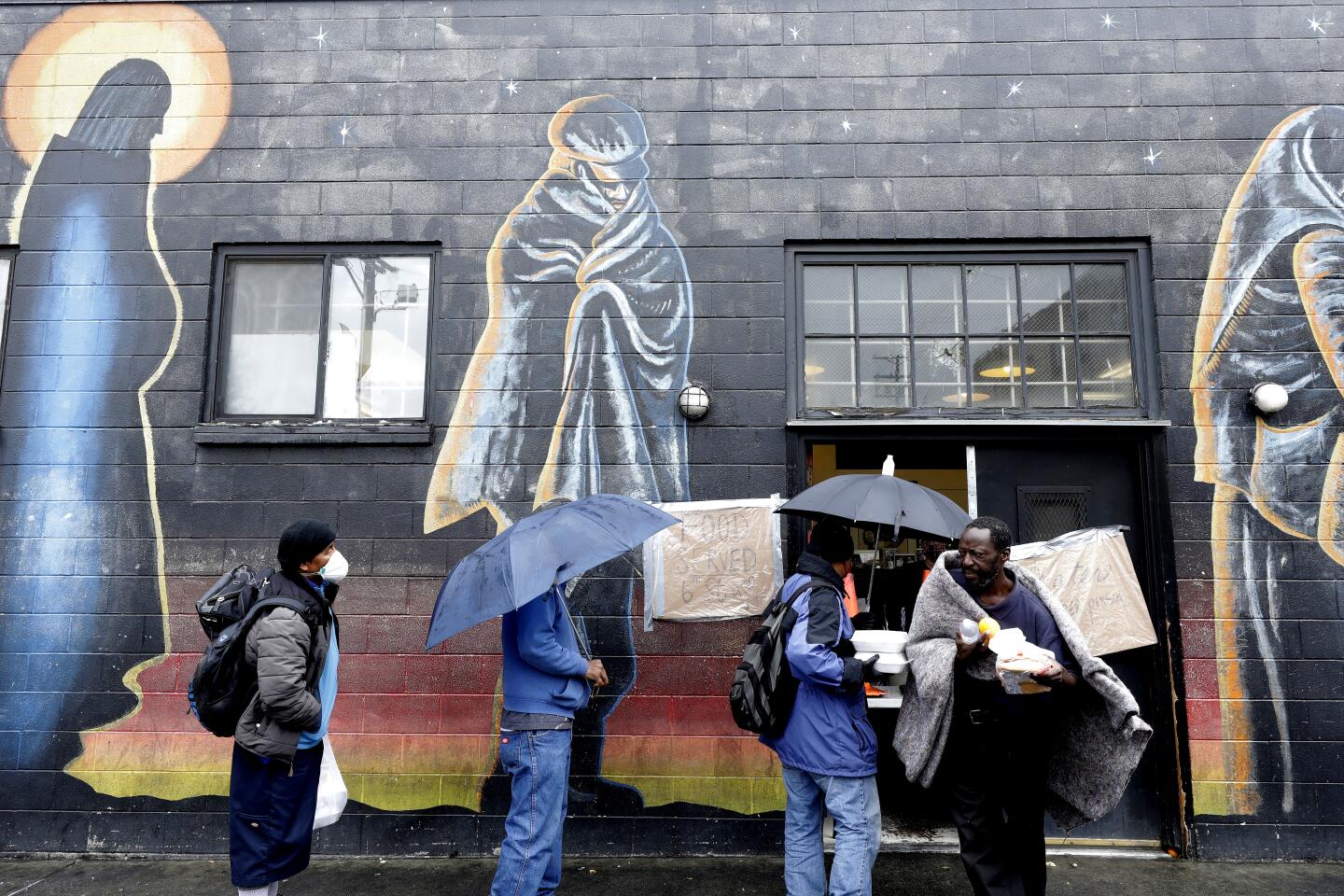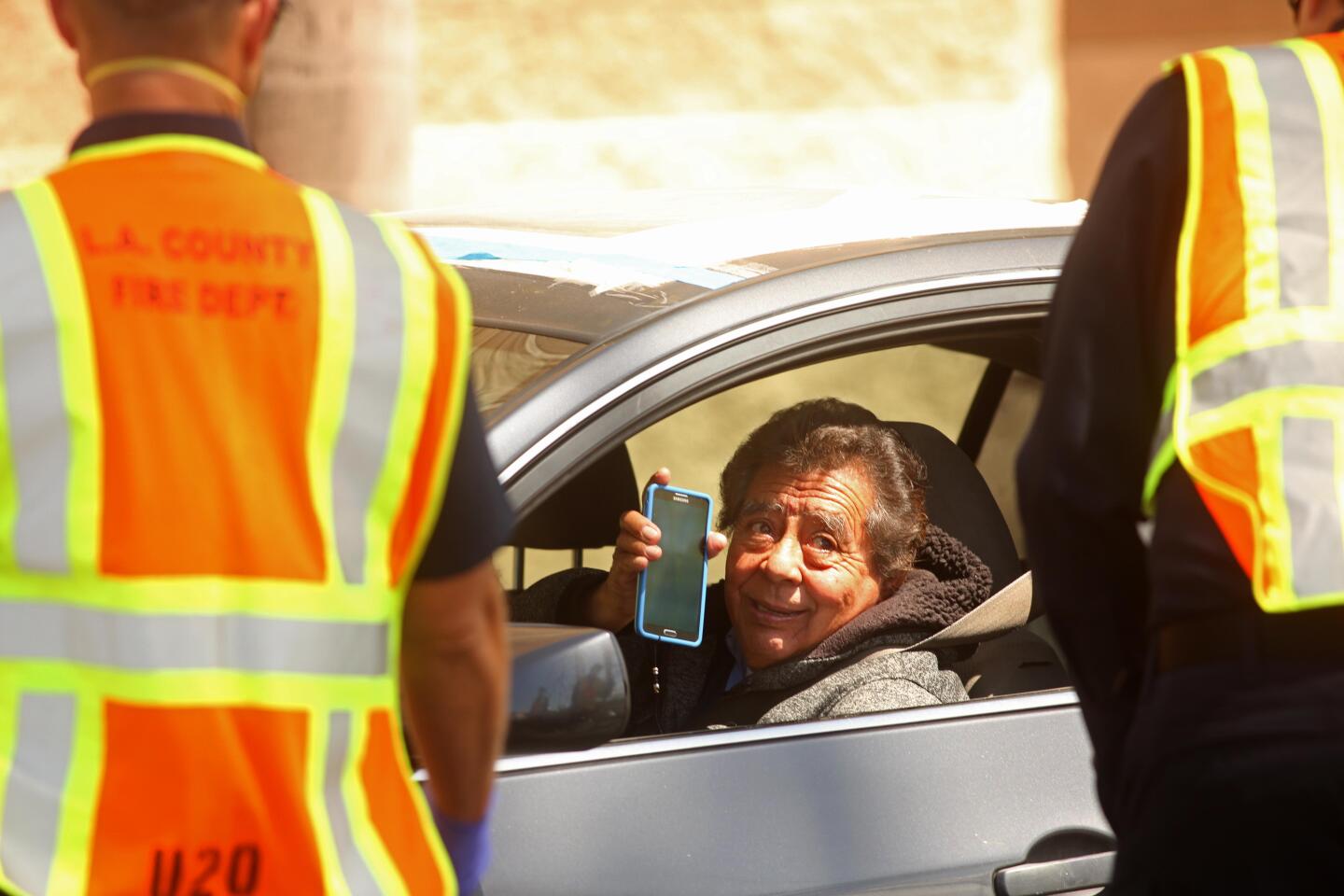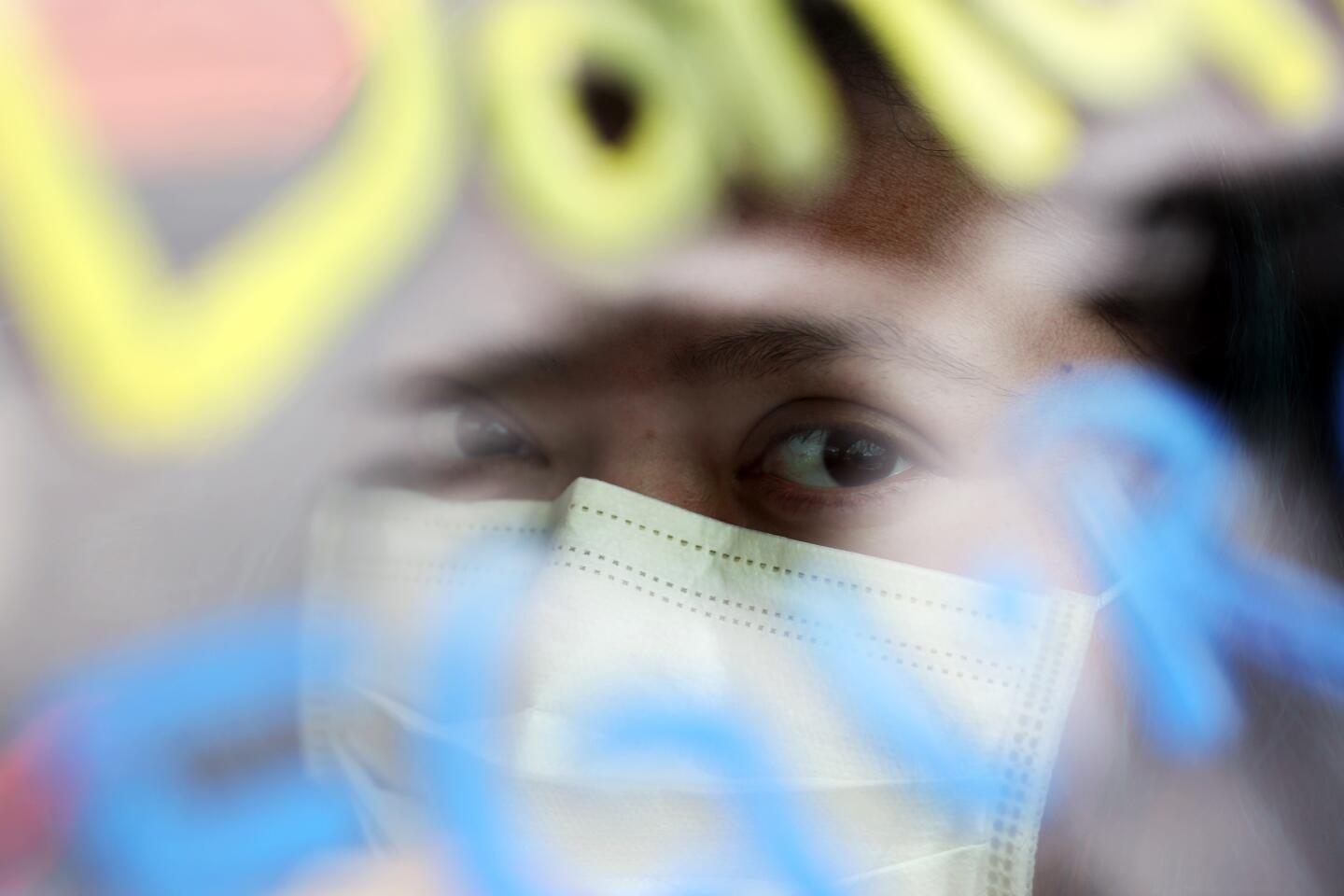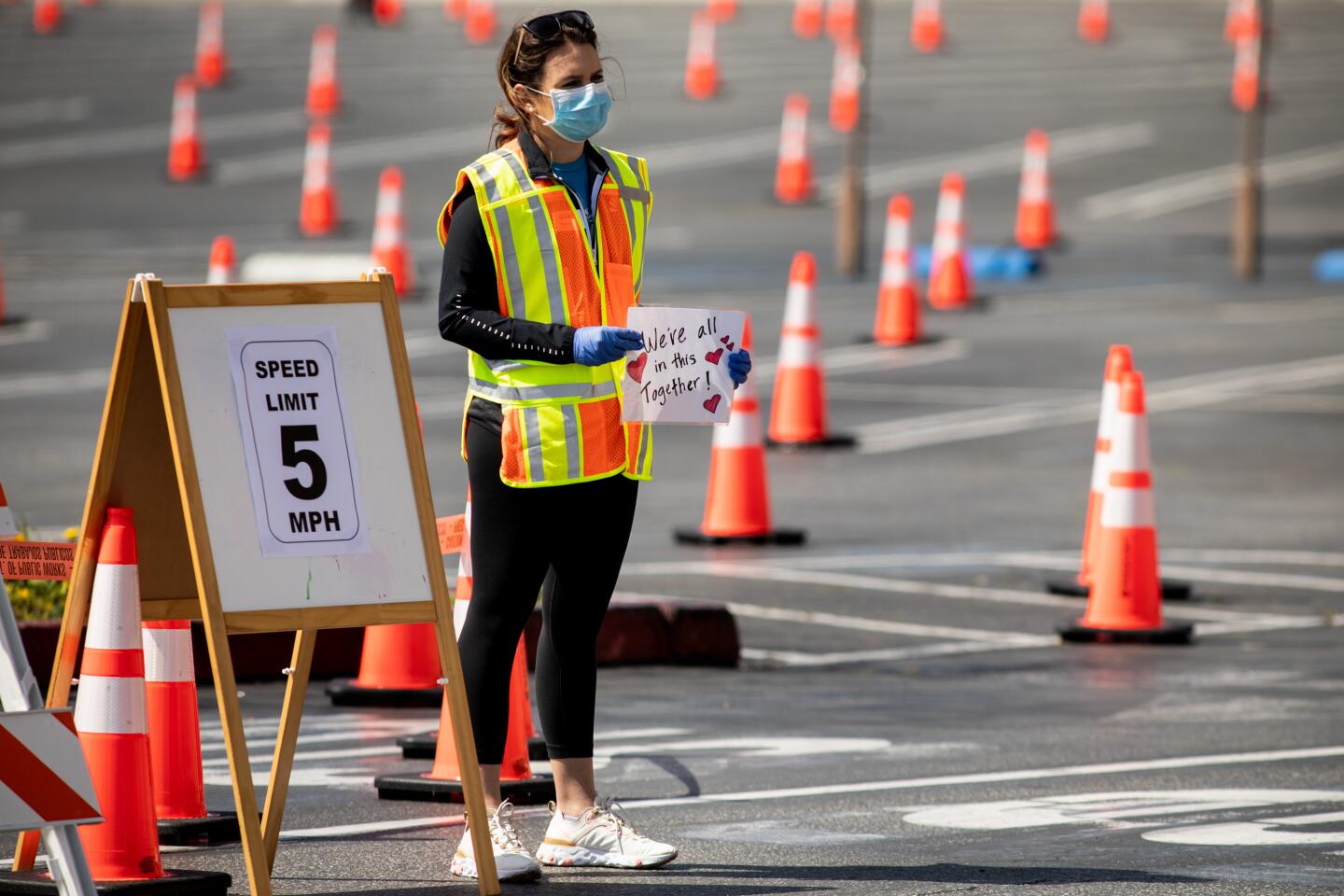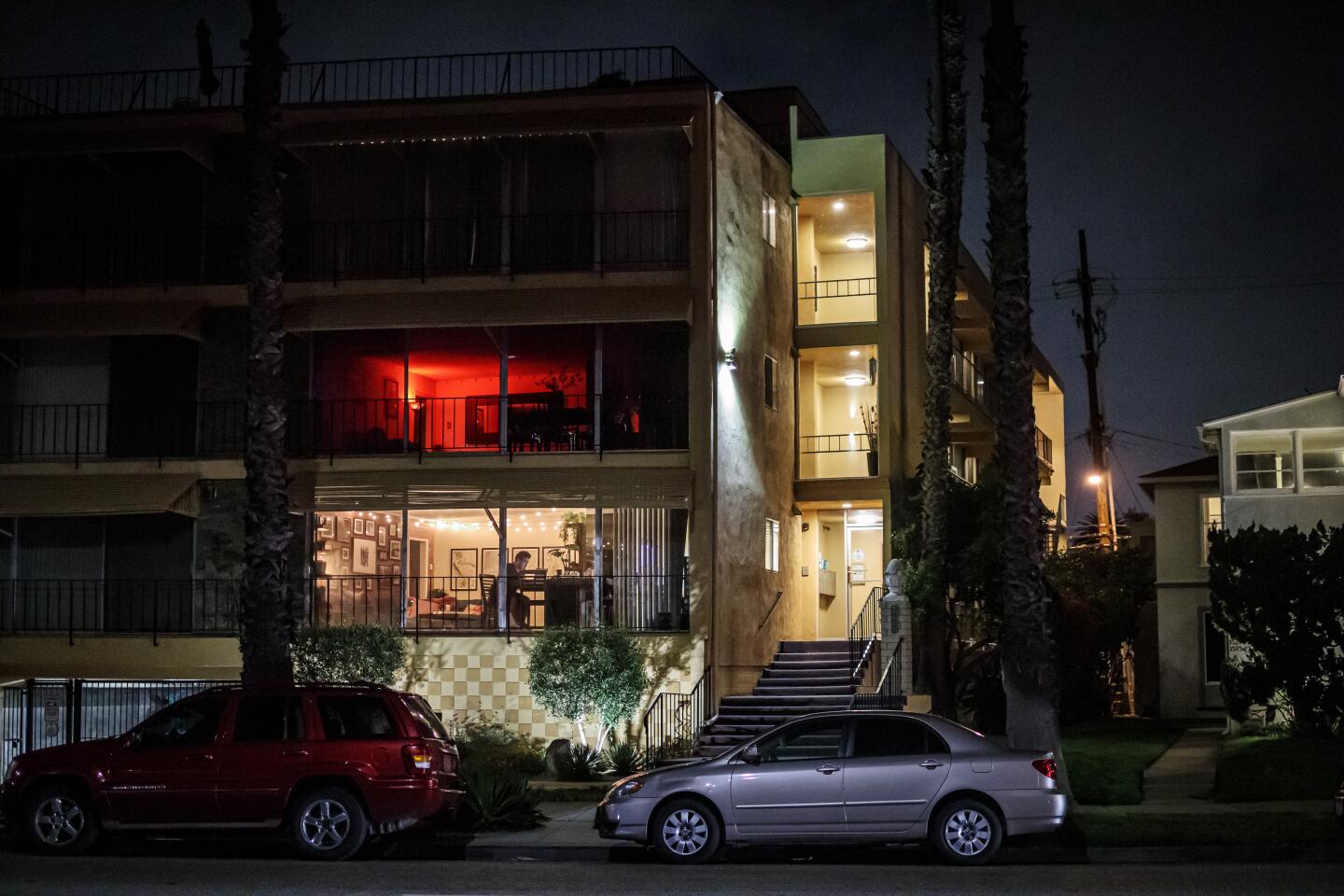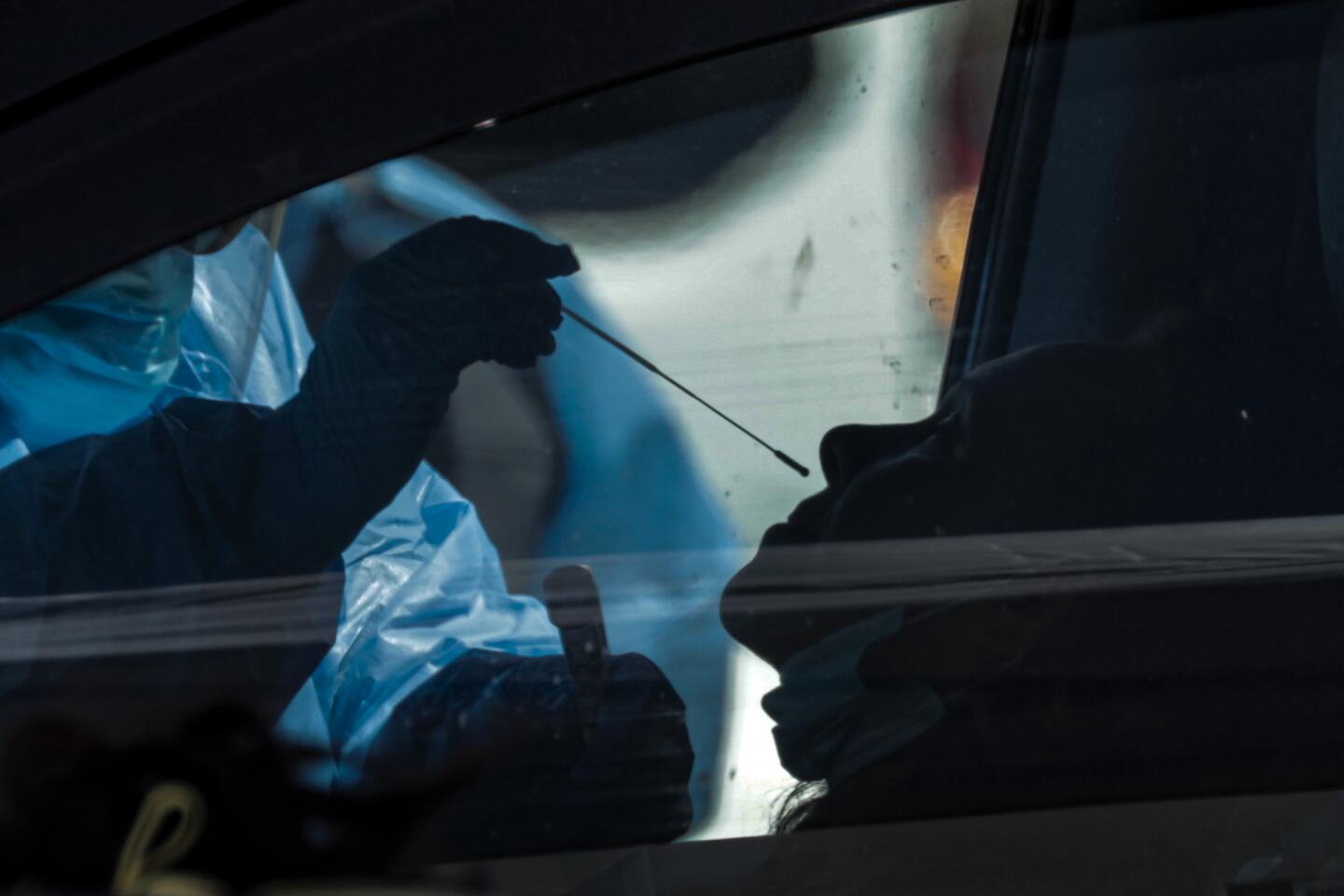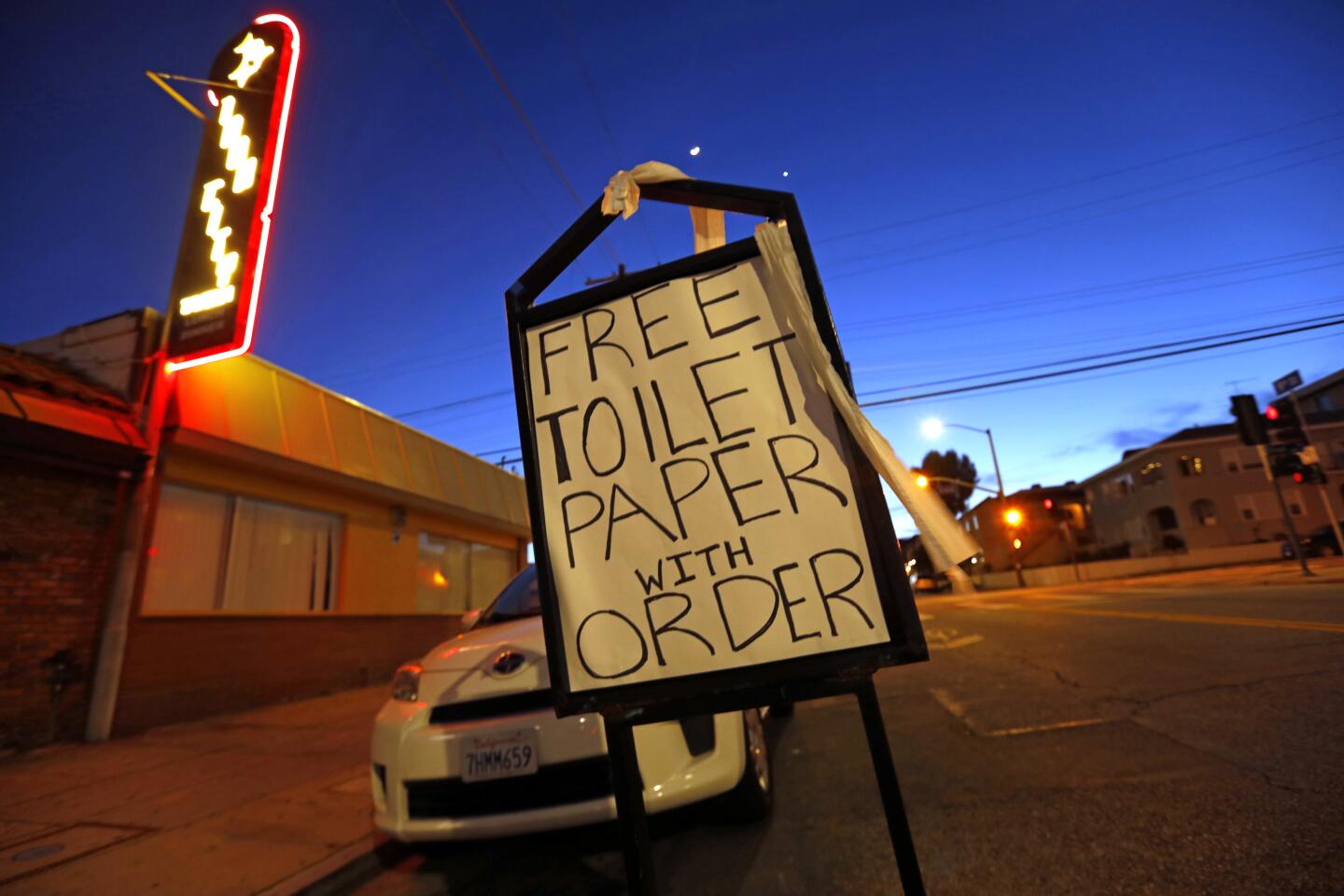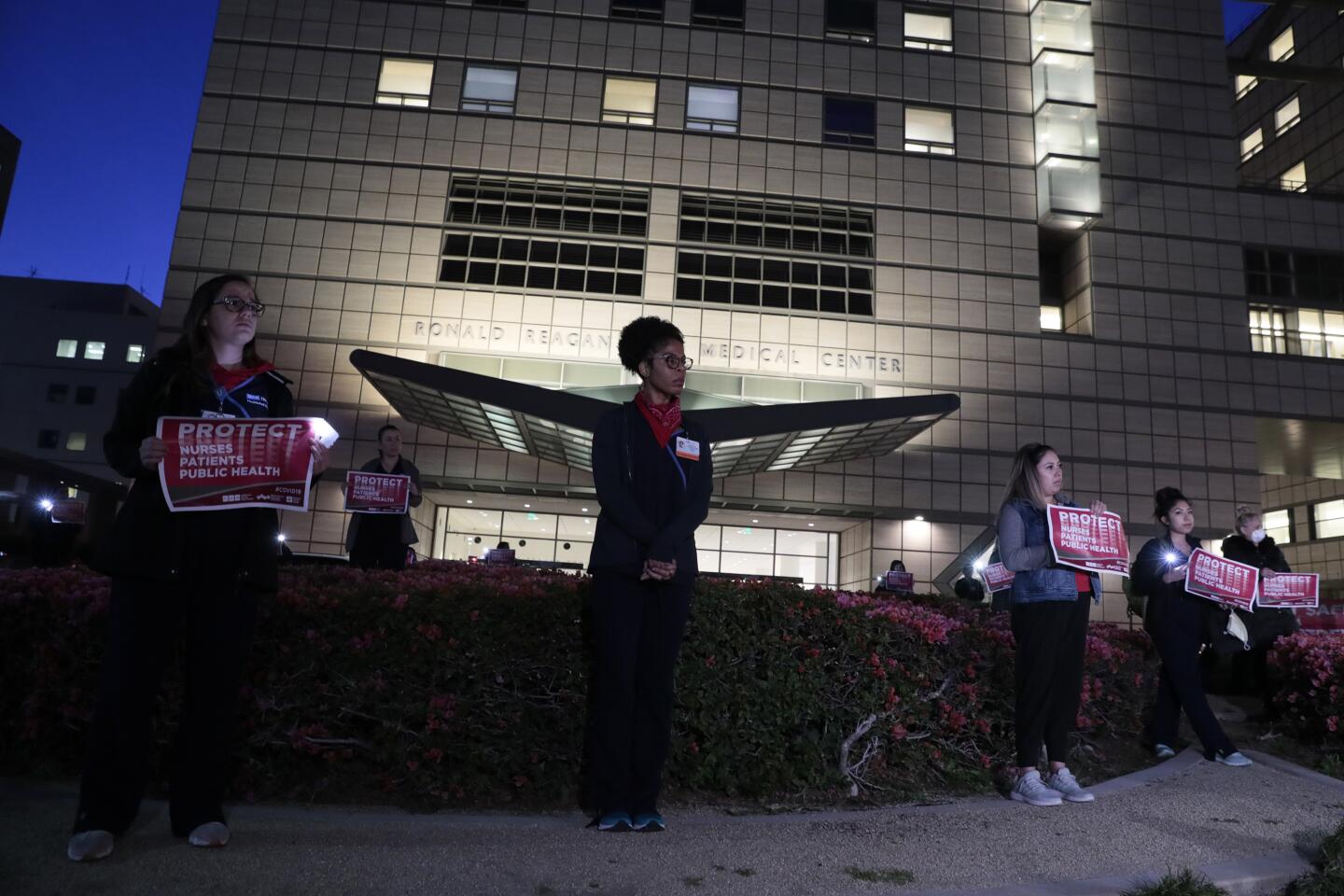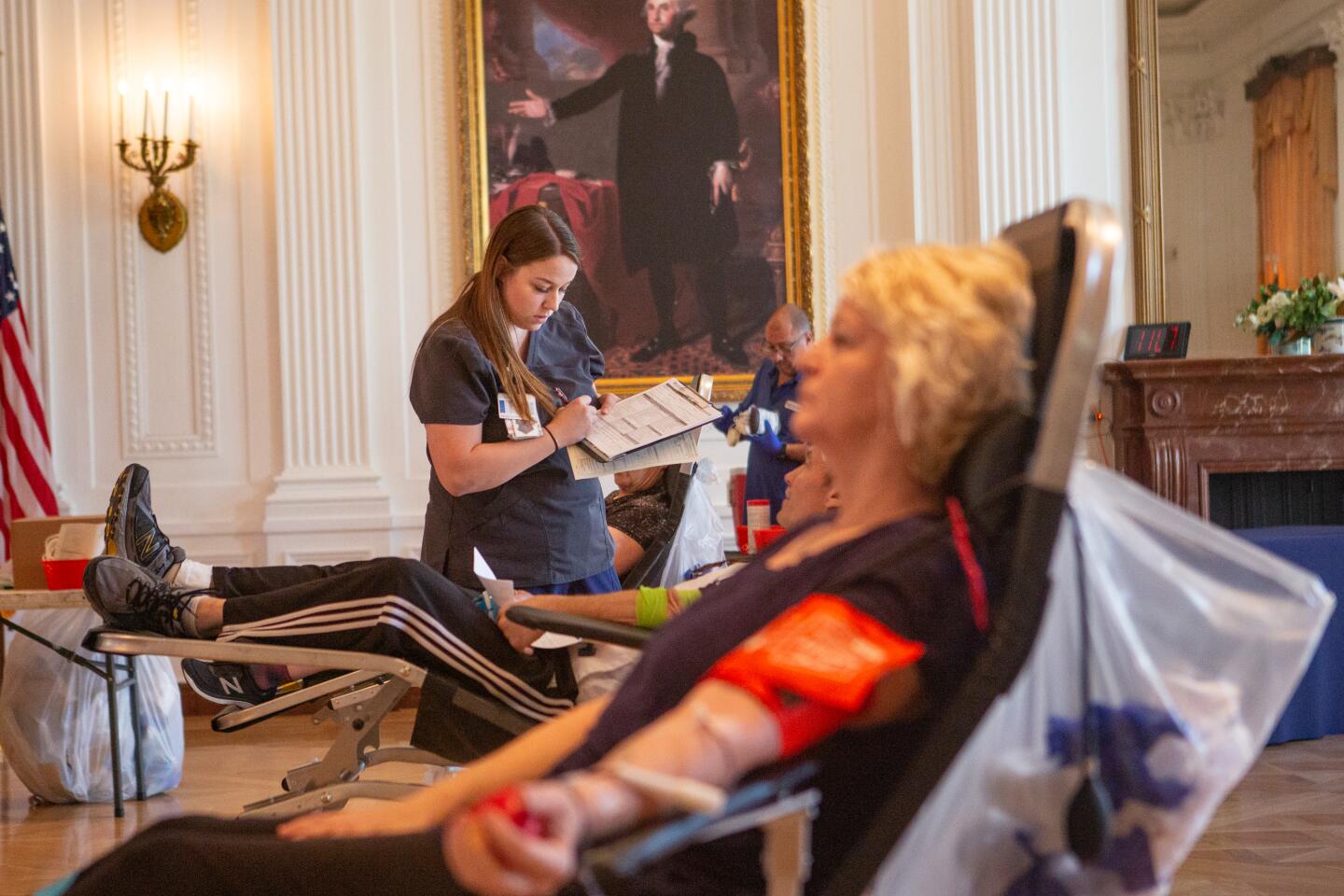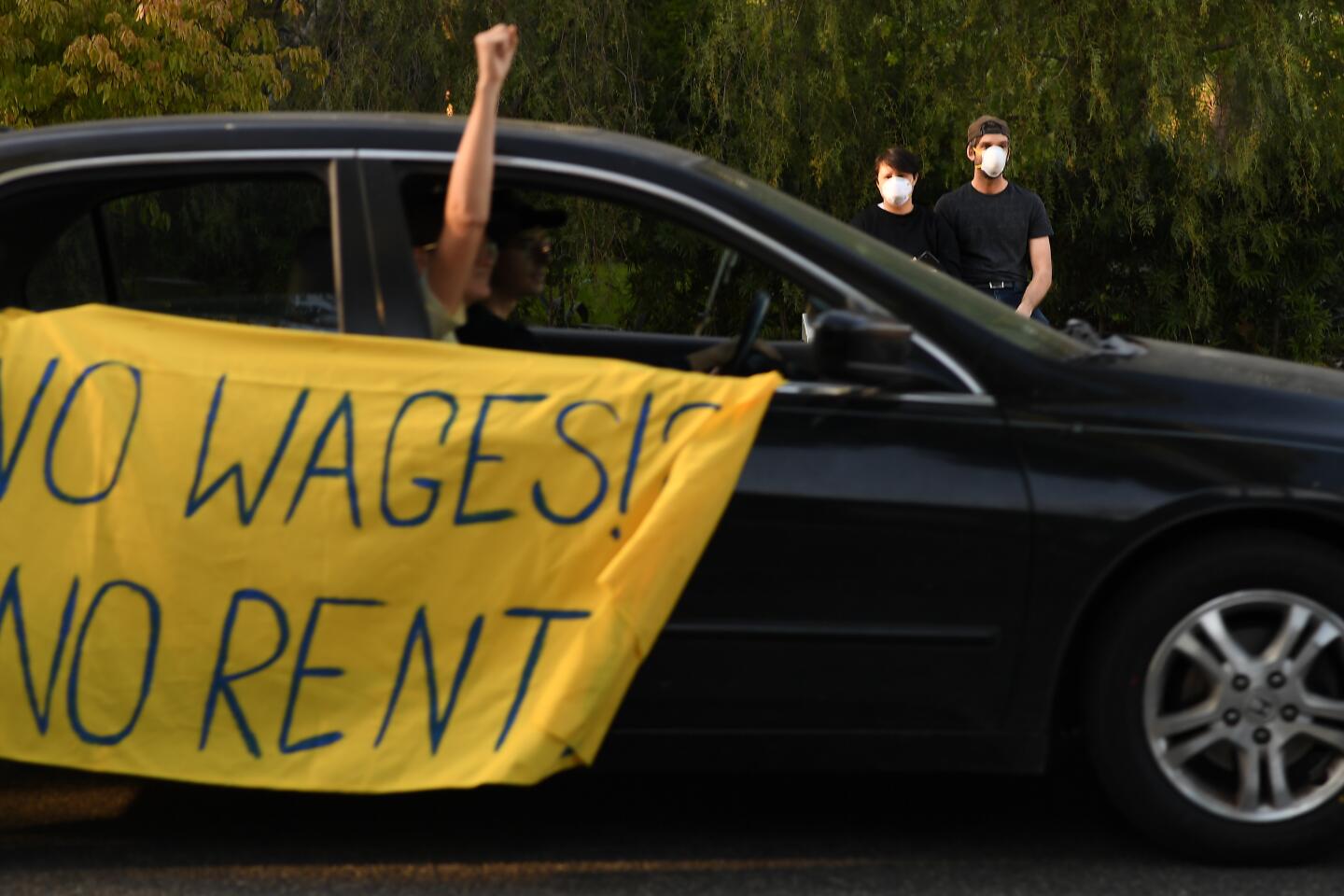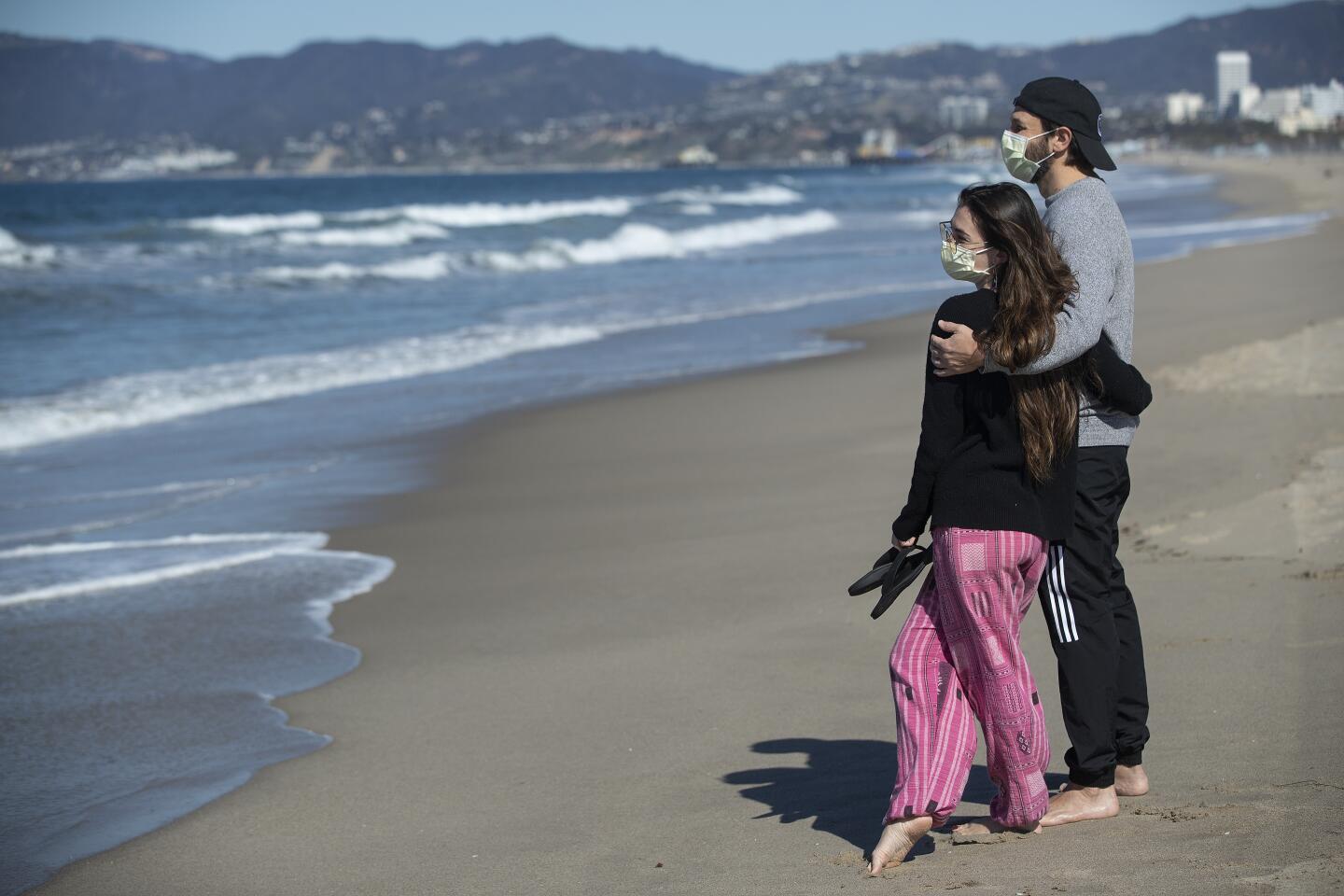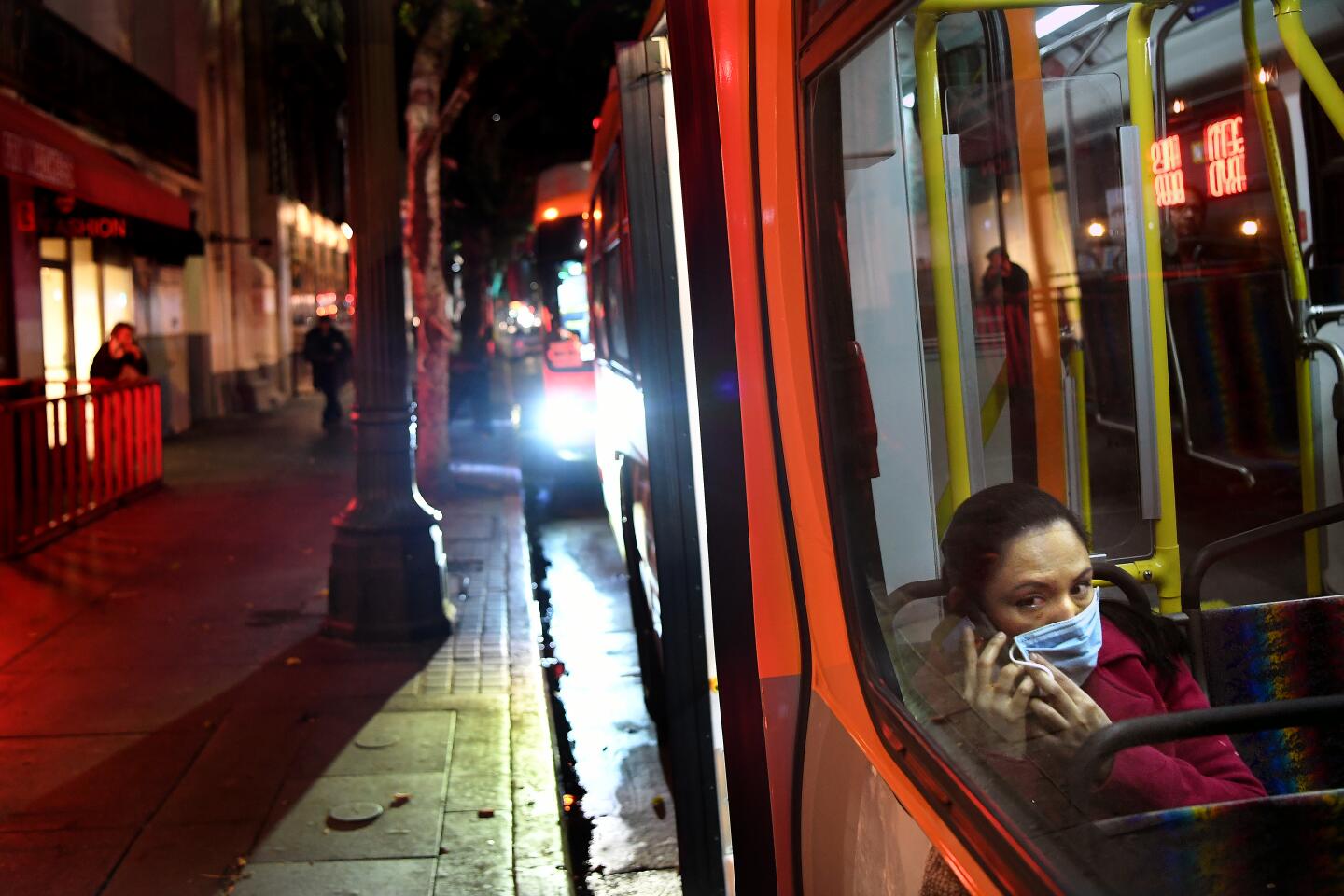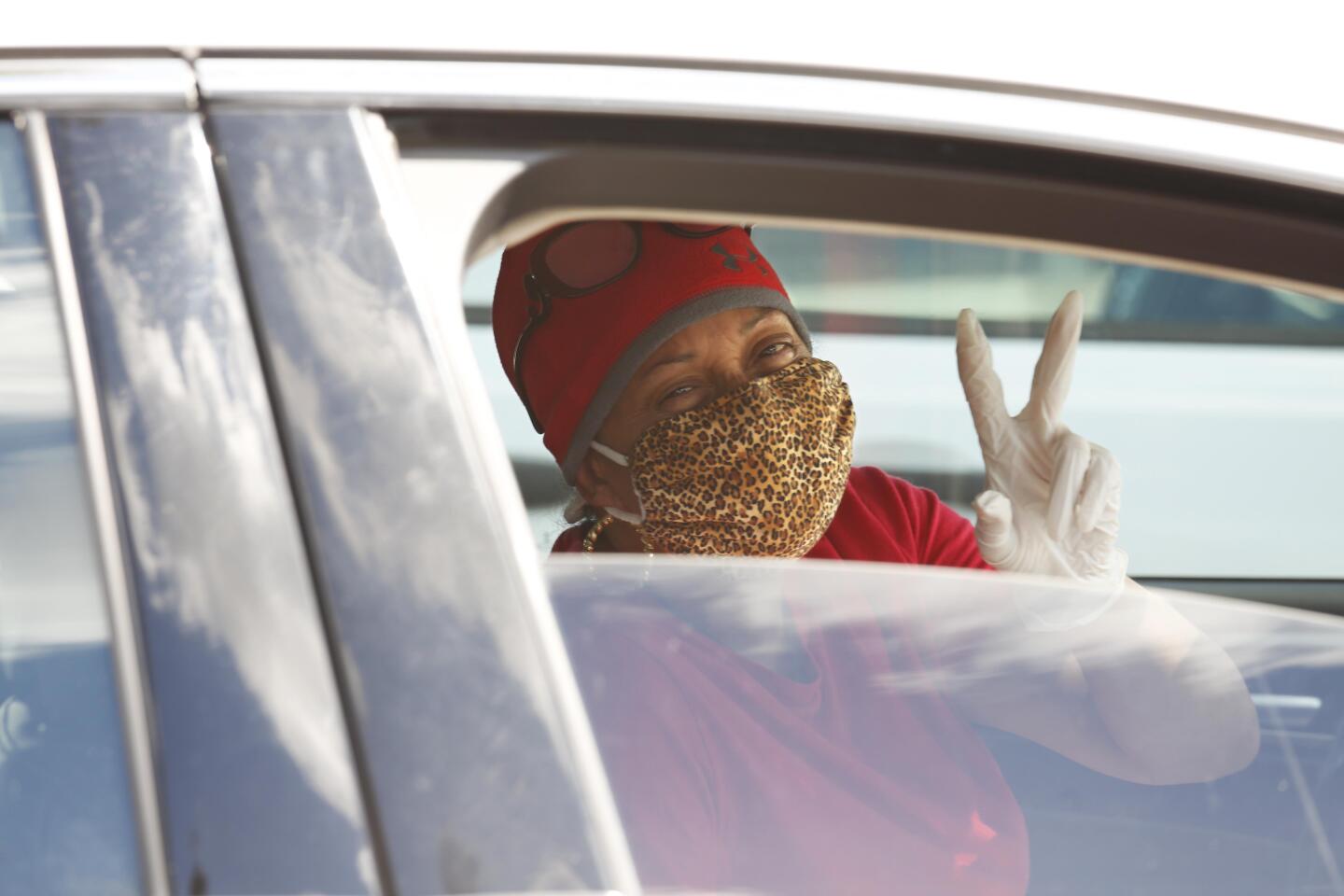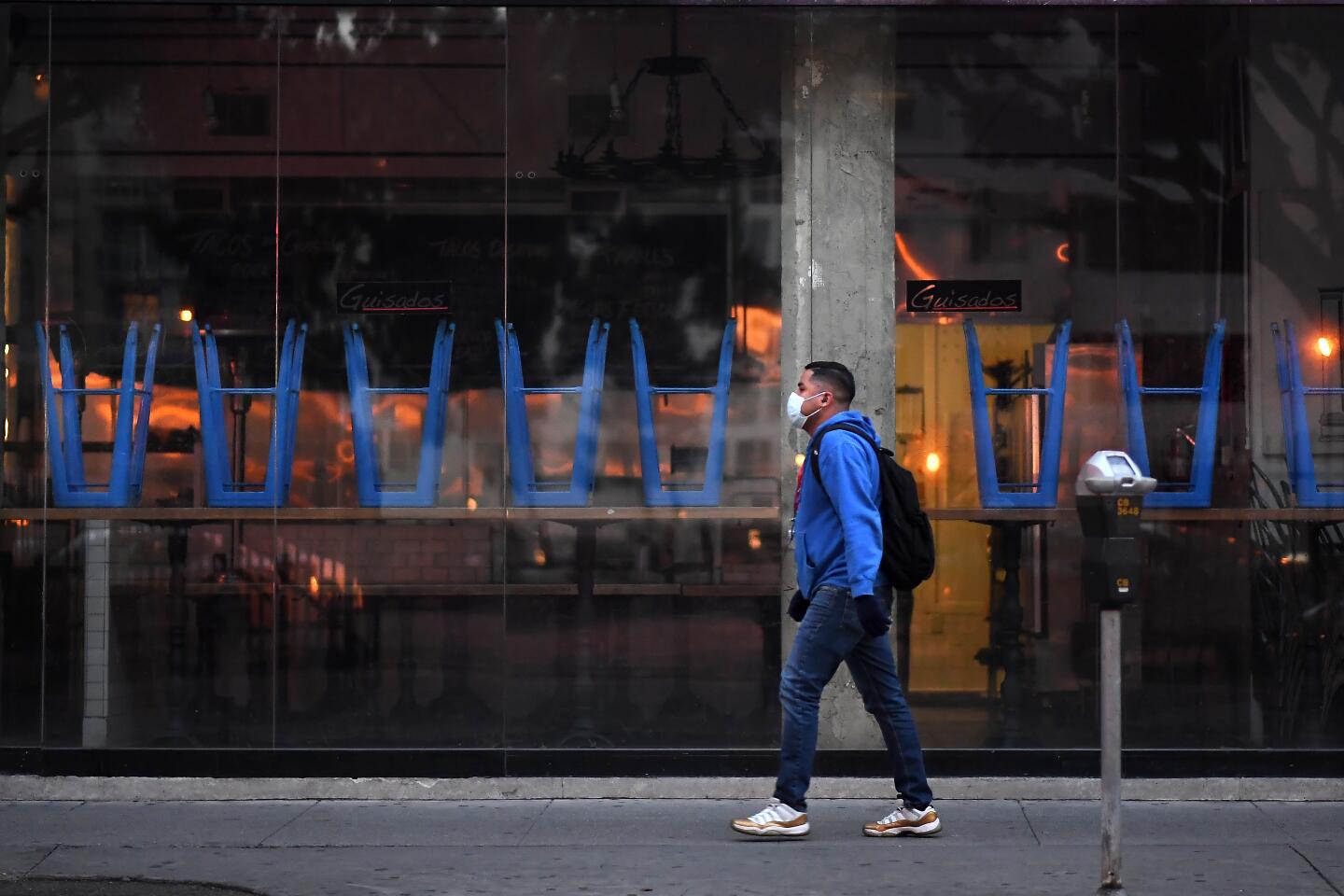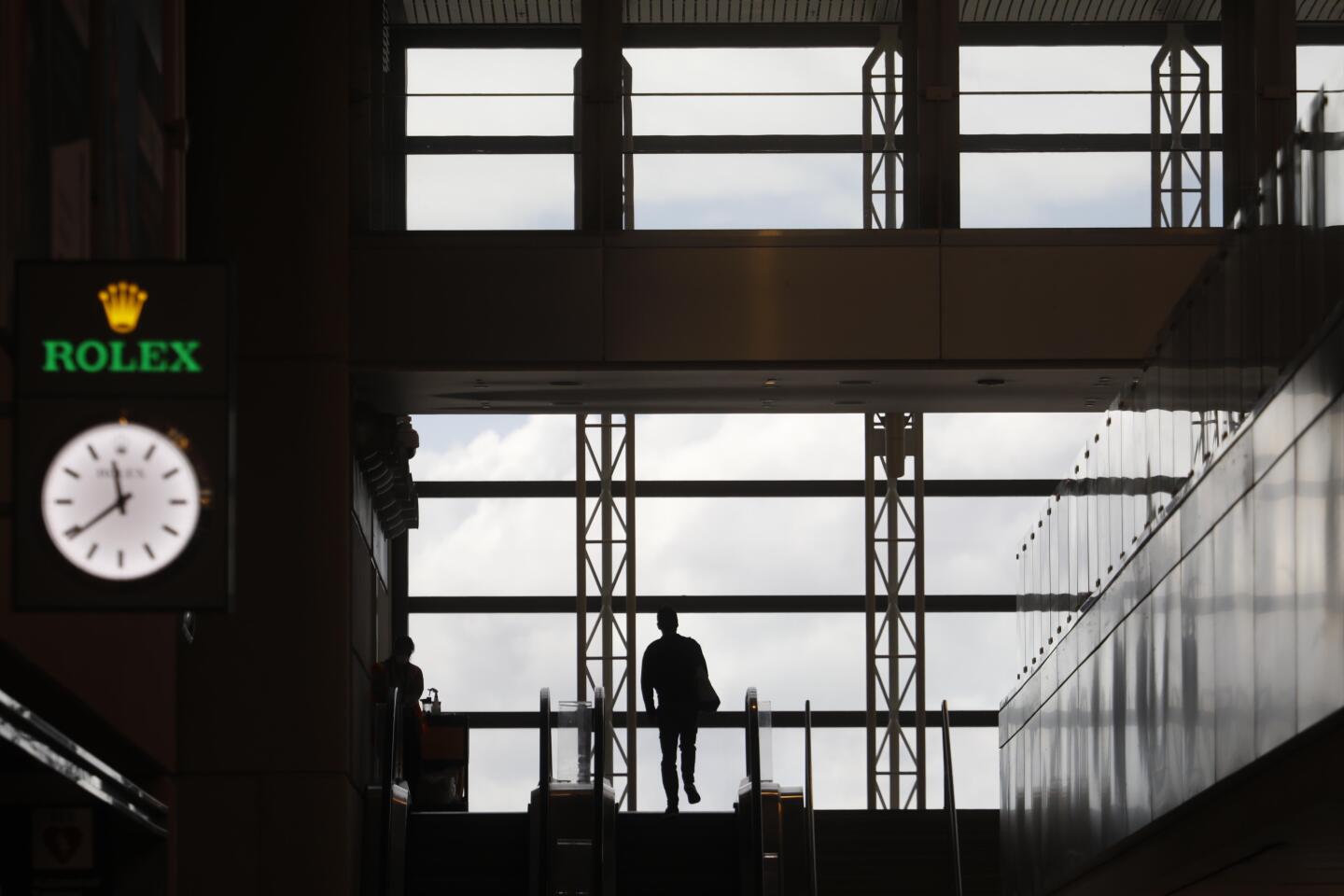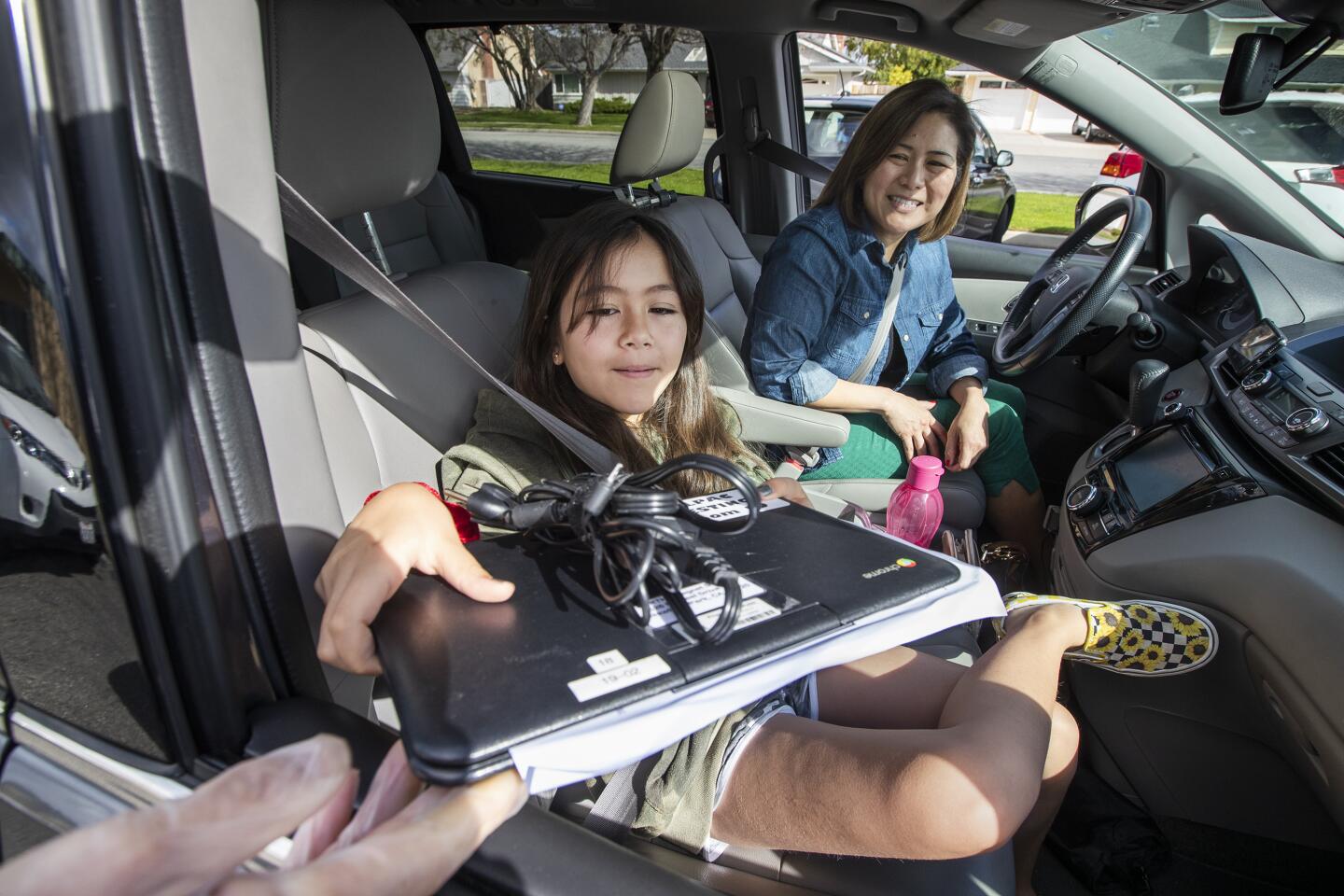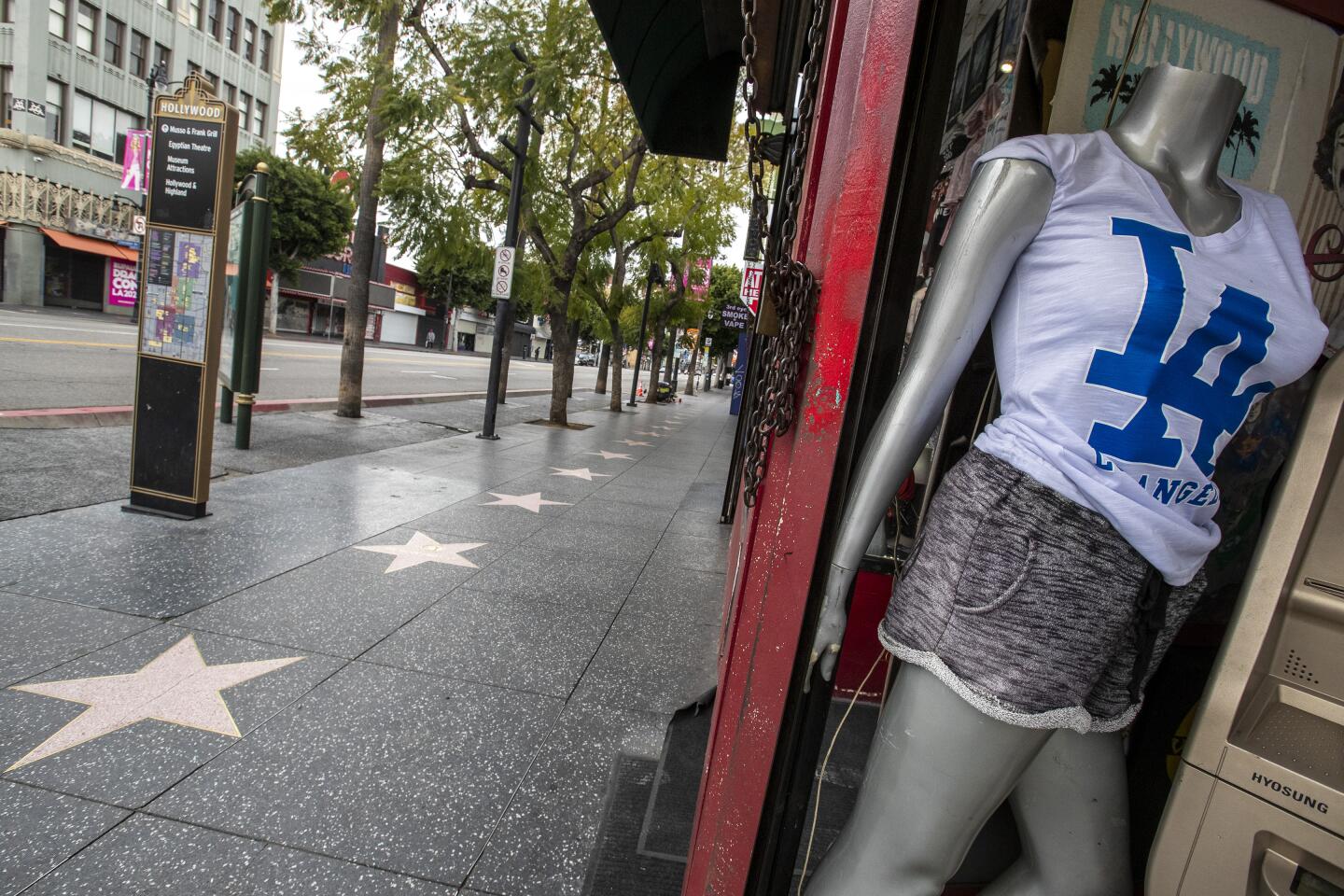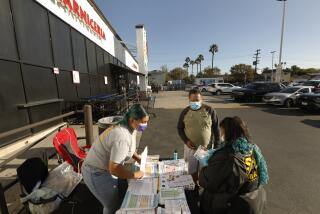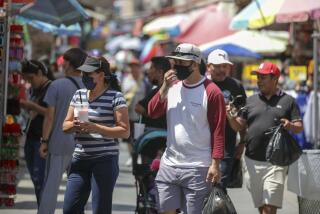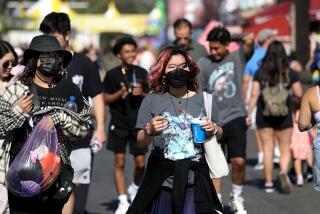L.A. County coronavirus deaths reach 320 on a day when lowest number of new cases is reported
- Share via
Los Angeles County health officials on Monday confirmed 25 new coronavirus-linked deaths, bringing the county’s total number of fatalities to 320 and marking an increase in the mortality rate in Southern California as city and county leaders continued to warn against prematurely ending shelter-in-place orders.
Despite the rise in deaths, the county reported only 239 new cases of the virus, the lowest number since March 26. But the county’s mortality rate also jumped over the weekend, rising from 2.8% on Friday to 3.4% on Monday.
“The number jumps because people are sick for a long period of time before death,” said Barbara Ferrer, director of the county’s public health department.
She noted that New York’s mortality rate — like L.A.’s — has increased while the state’s case count has decreased, probably for that same reason.
Roughly 1,059 people in L.A. County are hospitalized for COVID-19, the disease caused by the coronavirus. Of those, 18% are in intensive care and 15% of those patients are on ventilators.
Nearly 52,000 people in the county have been tested for the virus, Ferrer said, adding that roughly 5,000 to 6,000 are tested daily.
“We don’t know exactly who’s positive at any given moment in time,” she said.
The county continues to detail the race and ethnicity of those who have died. Although Ferrer did not say how many of the 320 victims have been cataloged, of those who have, 14% were black, 18% were Asian, 33% were Latin, 33% were white and 2% were identified as another race or ethnicity.
The deer, bobcats, coyotes and bears no longer have to deal with the hordes of camera-toting tourist vying to capture nature. They now roam unfettered.
Gov. Gavin Newsom said Monday that he will soon provide a framework for reopening California, after the state’s stay-at-home orders have been lifted. Newsom said he is working with the governors of Washington and Oregon to develop a plan to lift restrictions on daily life and reopen West Coast states.
“We will be driven by facts, driven by evidence, driven by science, driven by public health advisors and driven by the collaborative spirit that defines the best of us,” Newsom said about the strategy, which he plans to unveil Tuesday.
The governor announced a modest increase in hospitalizations related to the coronavirus: Roughly 3,015 people are hospitalized statewide and 1,178 are in intensive care.
The total number of confirmed cases in California continues to grow, but Newsom said “the curve is being bent because of you and your willingness to stay home.”
The number of confirmed cases in California rose above 24,000 on Monday, while deaths statewide increased to 723. The growth in cases has slowed in some parts of the state, however.
In Los Angeles, Mayor Eric Garcetti confirmed that 25 more people had died in the state’s largest city and an additional 113 people had tested positive for the virus. While he noted the rate of infection in L.A. seemed to be slowing, Garcetti repeatedly warned that a quick return to normalcy could have fatal consequences.
“Lifting restrictions too quickly could lead to a deadly resurgence,” he said.
After coughing several times during the briefing, Garcetti confirmed he had been tested for the virus, but the results were negative.
Bears, bobcats and other critters are roaming free in California’s most popular national park, closed to visitors since March 20
Garcetti also announced an initiative to provide an influx of cash to city residents who have been hurt by the nationwide economic downturn brought on by the virus. The “Angeleno Card Initiative” will aim to place debit cards worth up to $1,500 in the hands of city residents whose household income is below the federal poverty line or those whose family has fallen into “deeper economic hardship” because of the pandemic.
The effort is funded by an outside nonprofit setup by Garcetti, rather than the city itself, meaning applicants would not be subject to federal “public charge” rules that might discourage immigrants here illegally from seeking aid.
“We’re all in this together,” the mayor said. “We are all Angelenos, and I hope our federal government will listen to that too ... it doesn’t matter what their legal status is today.”
Even as California has made guarded progress against the spread of the illness, Los Angeles County continues to see a rising death count.
Public health officials reported 31 new coronavirus deaths on Easter Sunday, the largest single-day total since the outbreak began, surpassing a one-day high of 29 set Wednesday.
Officials have credited sweeping stay-at-home orders for the progress California has made. Ferrer stressed the ongoing need for the public to practice social distancing and remain at home if COVID-19 symptoms have been suspected or confirmed.
“The heart and soul of us being able to maintain the virus is in the ability to self-isolate and quarantine,” she said.
Los Angeles County health officials on Friday warned that residents must adopt even more stringent social-distancing practices to slow the spread of the coronavirus and said stay-at-home restrictions could remain in effect into the summer.
Even with the dramatic social distancing that county residents are already practicing, local officials forecast that up to 30% of the population could be infected by midsummer without more behavioral changes, such as reducing shopping trips.
On Monday, officials also described how the illness was continuing to spread in close-quarters facilities such as nursing homes and jails, highlighting the importance of distancing. Ferrer said 92 people who either lived in or worked at assisted living facilities had died of COVID-19, accounting for roughly 29% of the county’s death toll.
A custody assistant at Men’s Central Jail in downtown L.A. has also been placed on life support, L.A. County Sheriff Alex Villanueva said Monday. In total, 33 Sheriff’s Department employees have contracted the virus and an additional 429 employees are under quarantine, he said.
The number of L.A. County Probation Department employees sickened by the virus also jumped to 16 on Monday, including six people assigned to facilities where youths are housed, according to Interim Probation Chief Ray Leyva.
Eight juveniles have been tested for the virus, but none have contracted the illness, health officials previously told The Times.
While the strict physical distancing measures in L.A. County, which have been in effect for three weeks, have had an effect in saving many lives, models presented by the county Friday show troubling forecasts if officials lift the stay-at-home order now.
There are still too many people becoming infected with the coronavirus in Los Angeles County, officials said. And there is more than a 50% chance that the current capacity of intensive care unit beds in Los Angeles County, roughly 750 beds now, could be exhausted by late April.
Officials outlined the stark paths ahead for L.A. County. If the stay-at-home order were quickly rescinded and people resumed their normal habits, 95.6% of L.A. County residents would be infected with the coronavirus by Aug. 1, according to projections released by the county.
Coronavirus might have been in California as early as December. The timing had dire consequences
Ninety-five percent of respondents say they supported L.A. elected officials’ decision to implement a stay-at-home order for all but essential personnel, a new Loyola Marymount University poll found.
Those who identified as politically conservative tended to be more skeptical of both the stay-at-home orders and the level of threat posed by the virus.
Only 76% of them viewed the virus as a real threat, compared with 91% among liberals. Conservatives also saw themselves as less vulnerable, with 74% saying they worried they would catch the virus, compared with 85% of liberals.
Times staff writers Doug Smith, Dorany Pineda and Rong-Gong Lin II contributed to this report.
More to Read
Sign up for Essential California
The most important California stories and recommendations in your inbox every morning.
You may occasionally receive promotional content from the Los Angeles Times.
